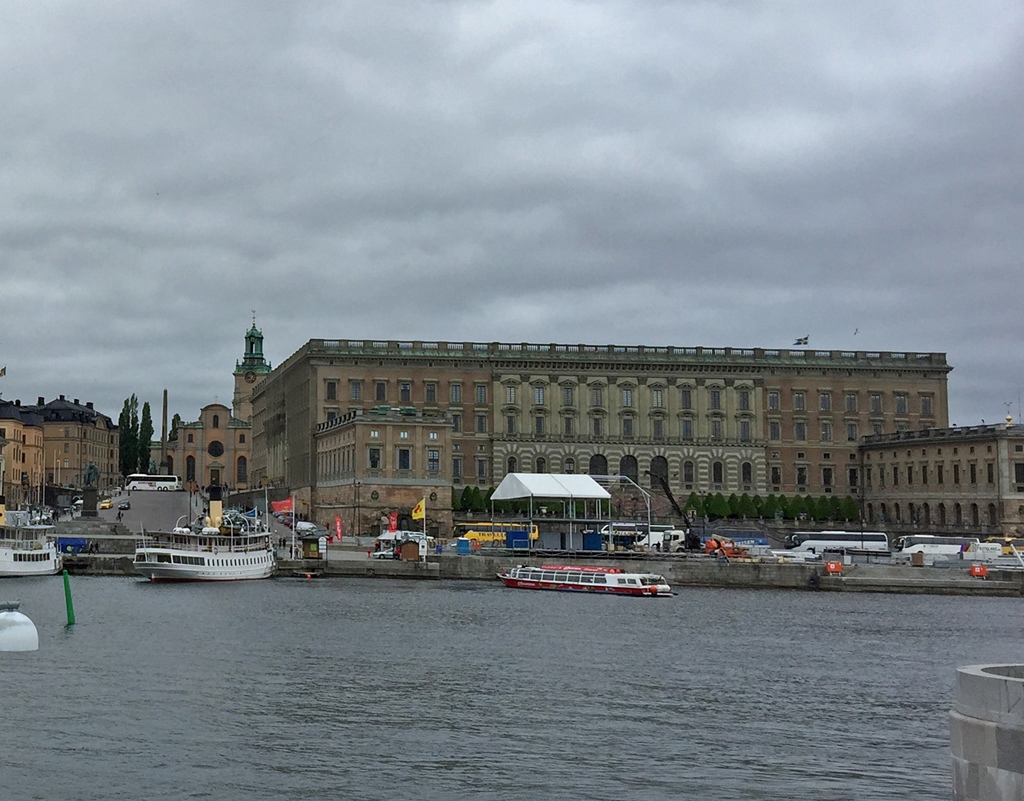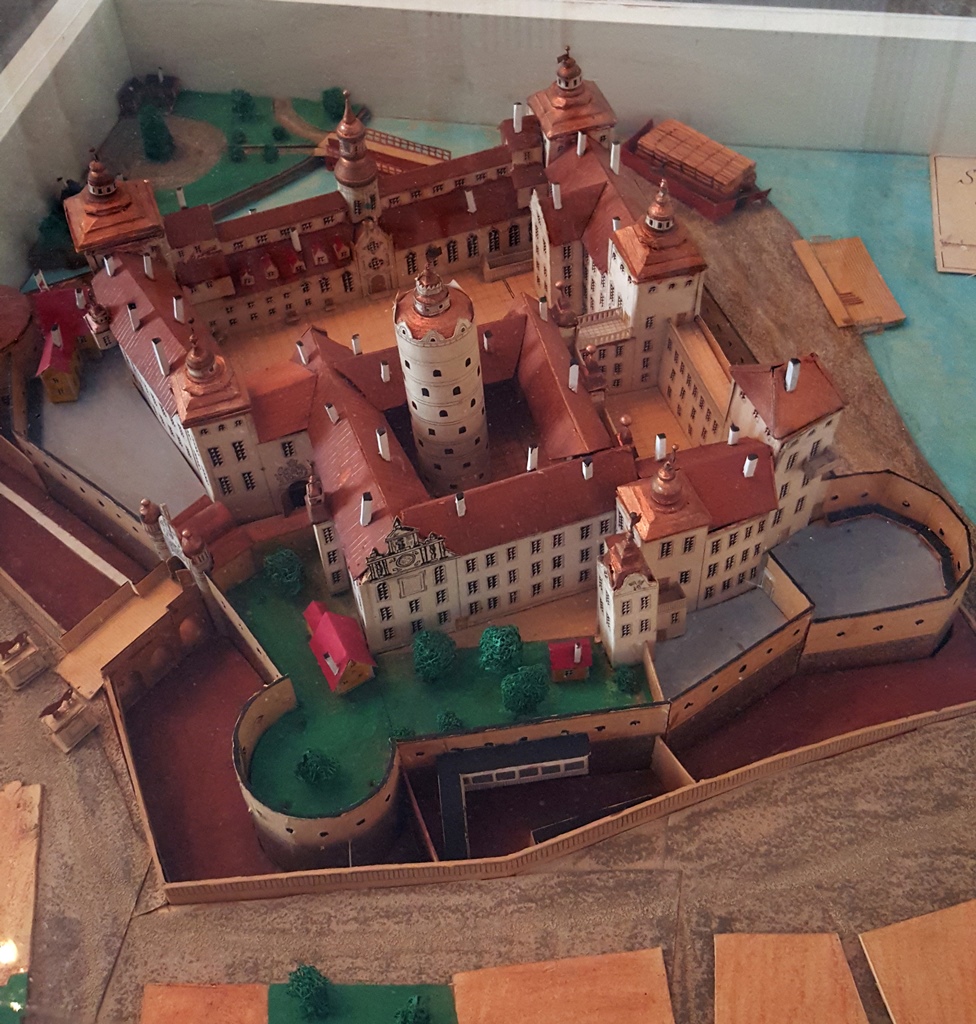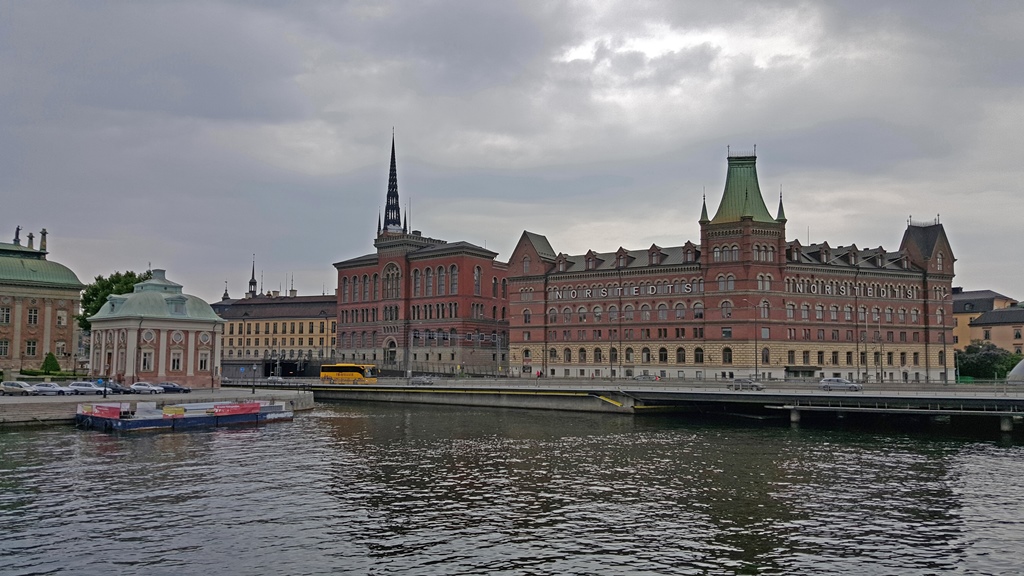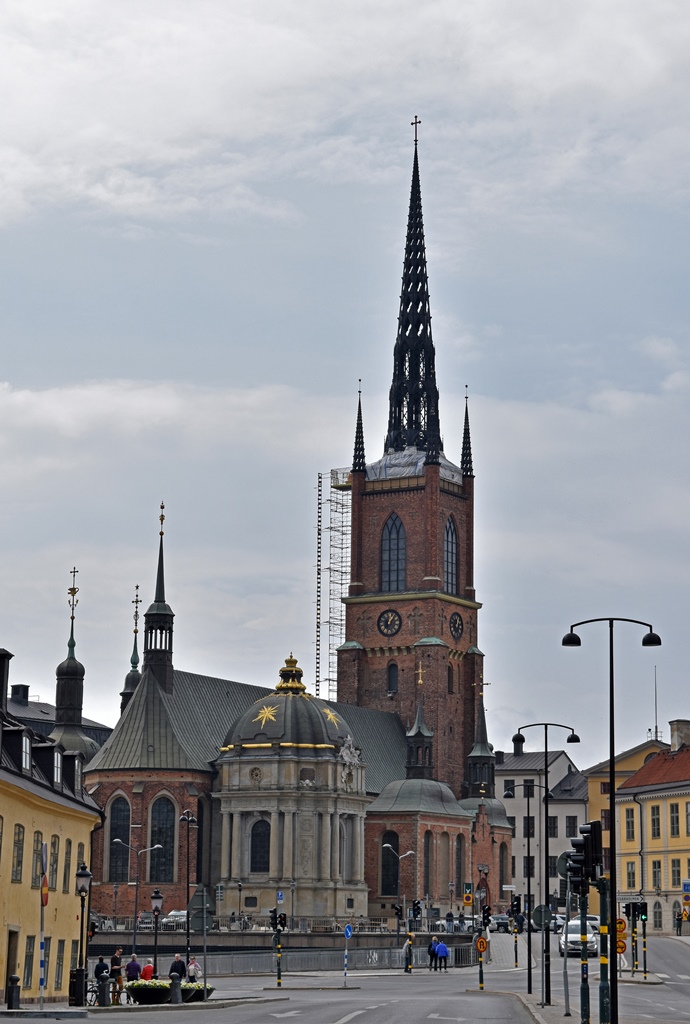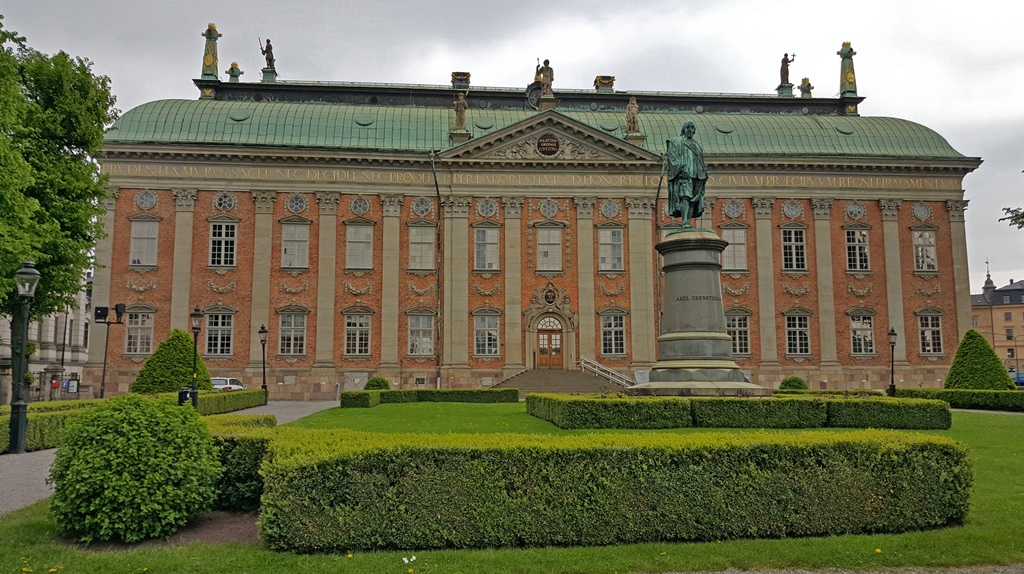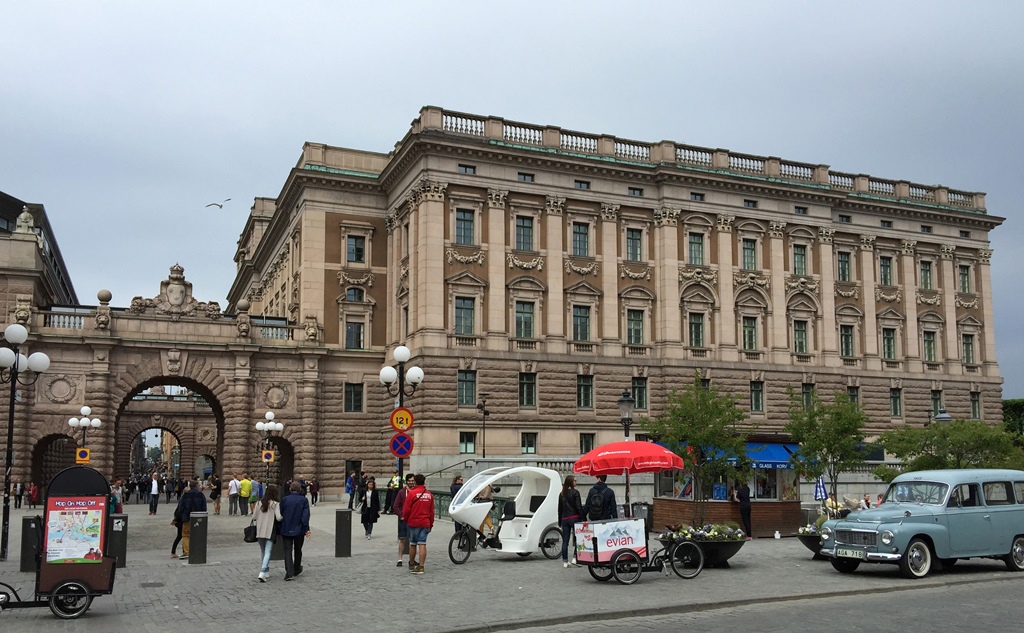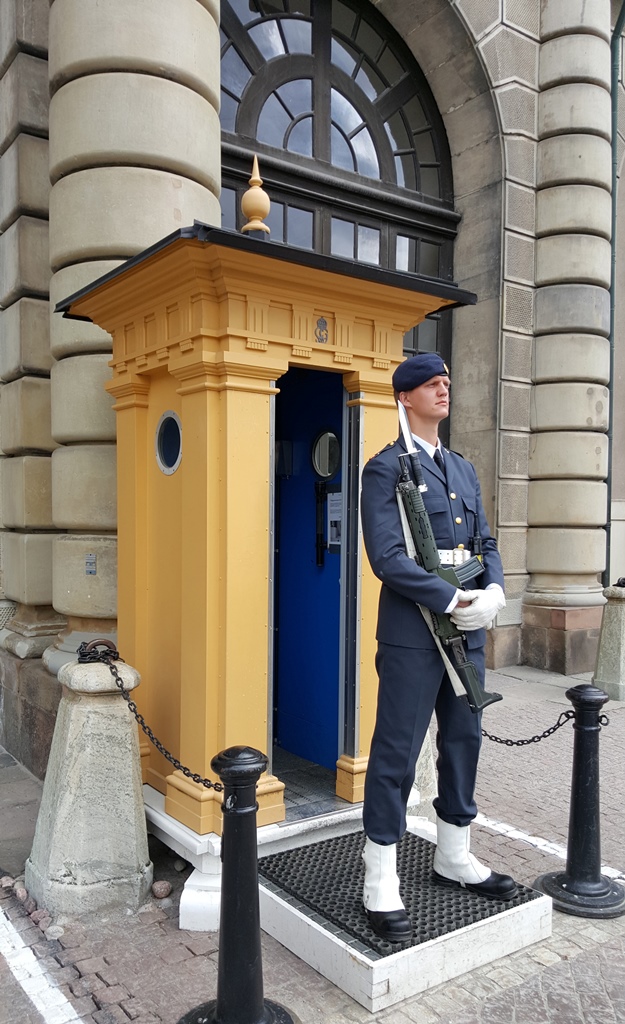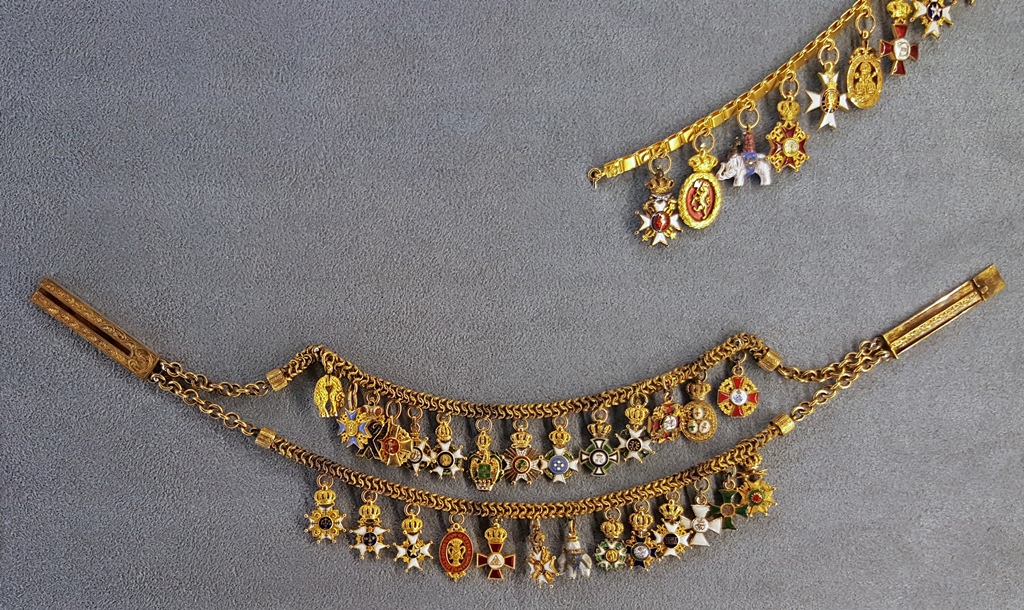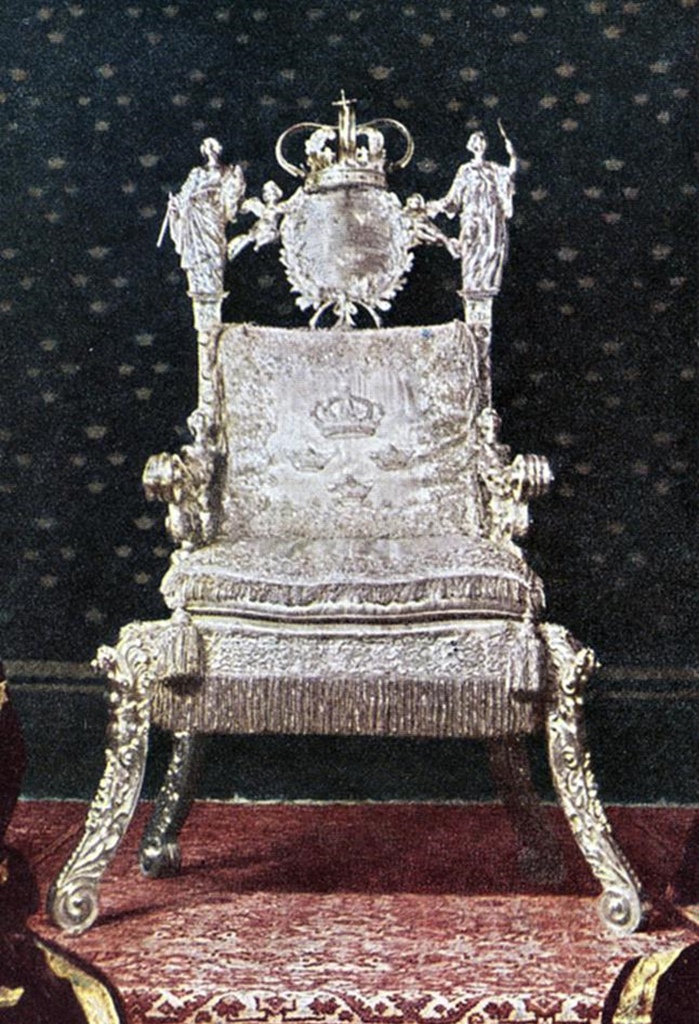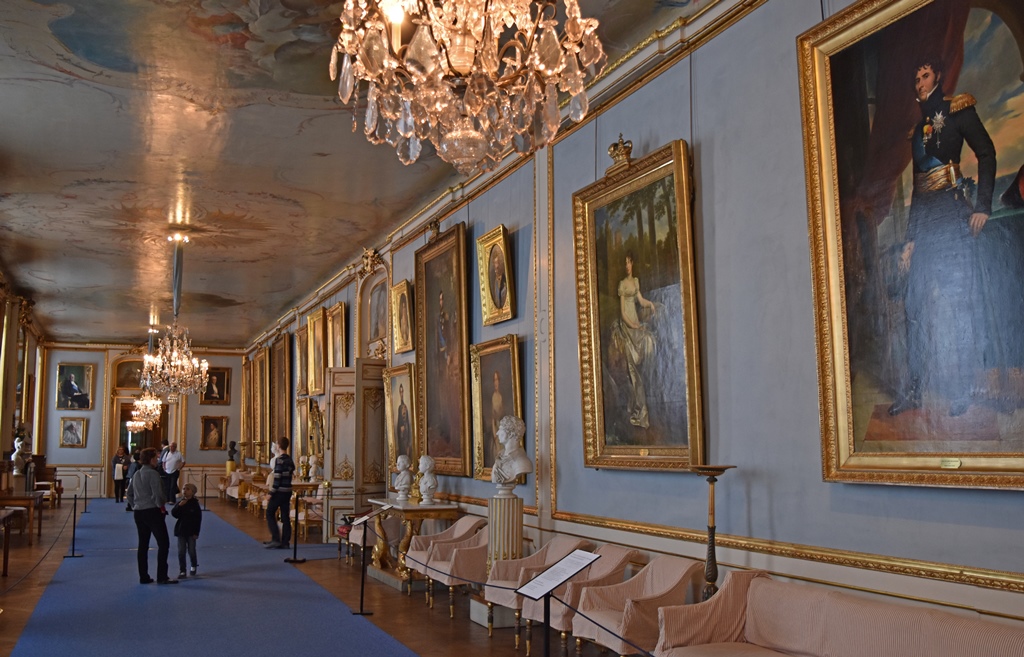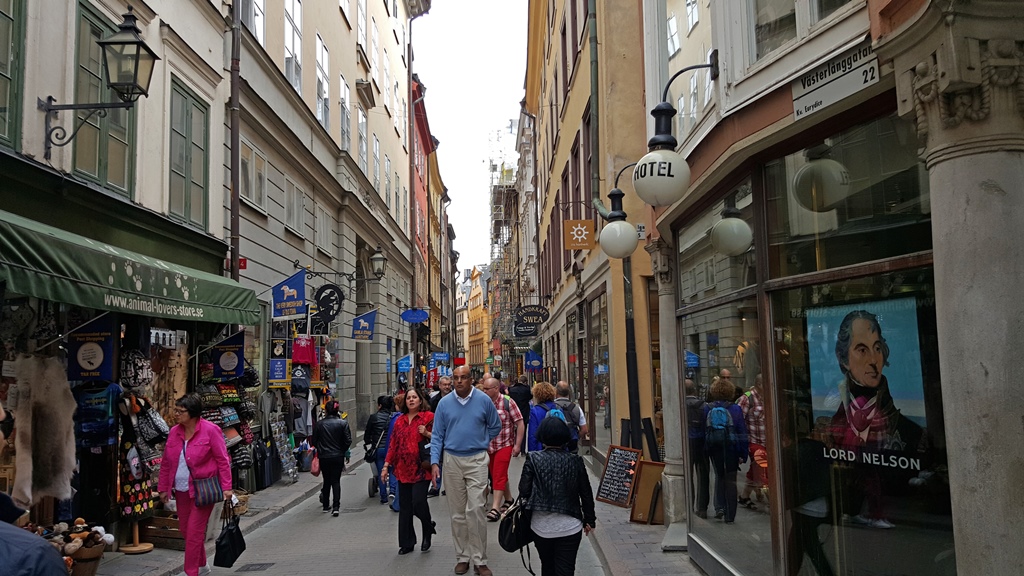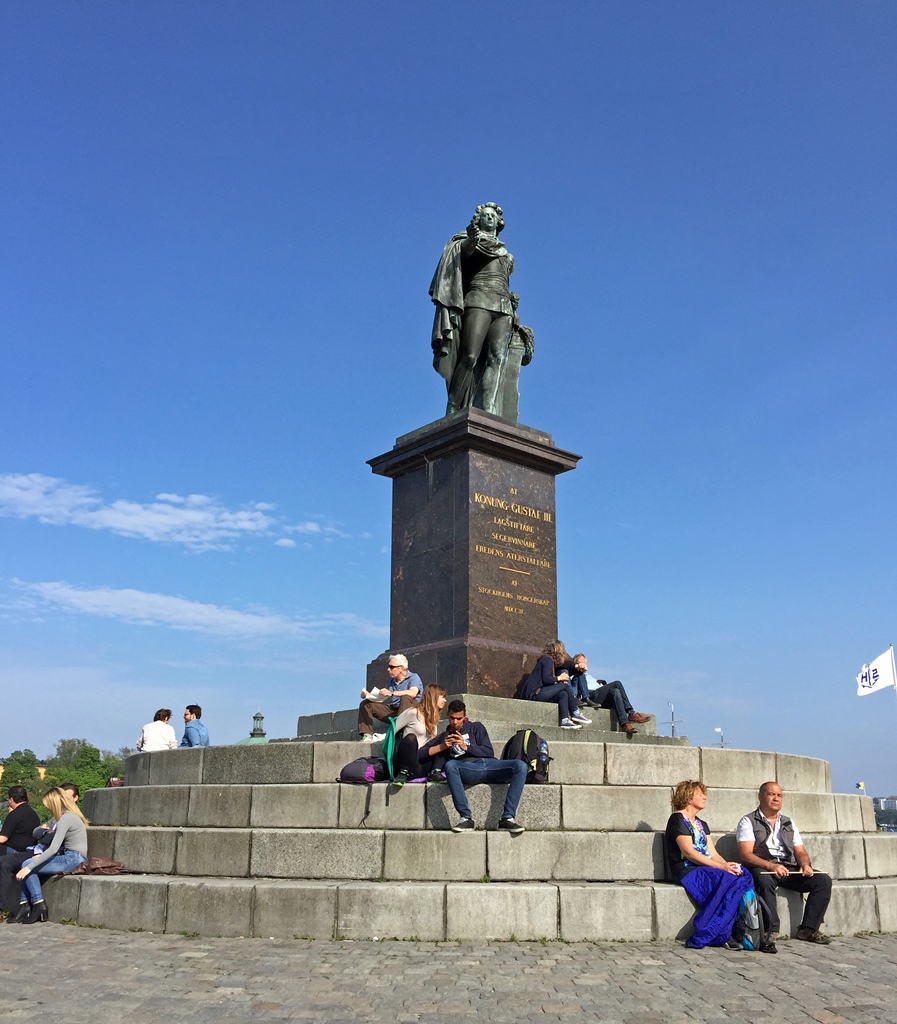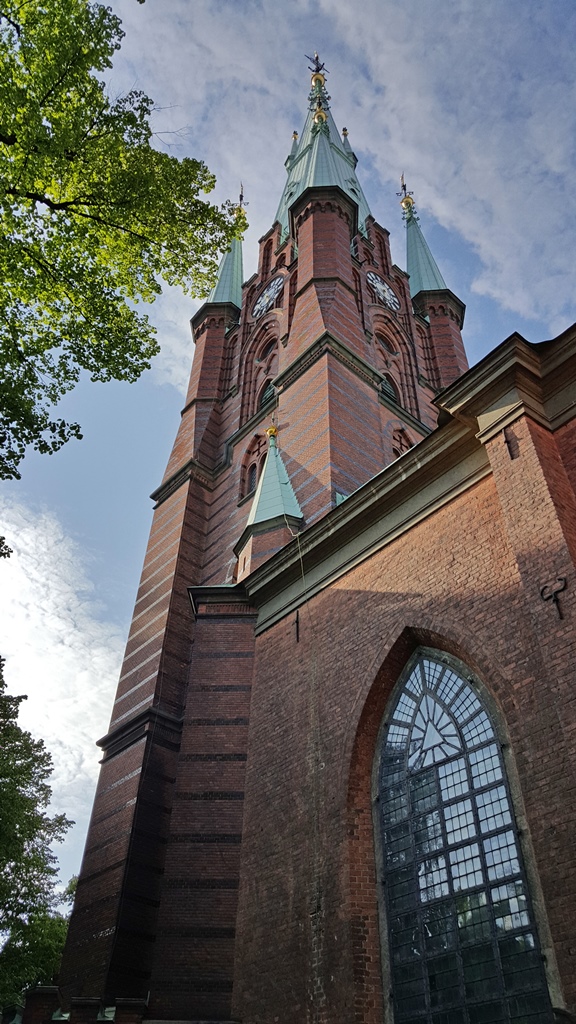Royal Palace
Stockholm’s Royal Palace (Kungliga Slottet in Swedish) is the official residence of the
Swedish monarch (Carl XVI Gustaf at present) and the principal landmark in the city’s Old Town
(and arguably the entire city). Though this is the official residence, this is not where the
royal family actually lives, though the naïve could be excused for making this inference. Instead,
King Carl Gustaf and Queen Silvia live in the more intimate Drottningholm Palace (“intimate” as in
somewhat smaller than the Royal Palace), seven miles away on an island in Lake Mälaren. But the
Royal Palace is home to the offices of the Royal Court, and is also used for state ceremonial
purposes. As of now, it’s also the site of museums and libraries. There’s plenty of room for all
of this: the building is 750 feet long and 410 feet wide, and has 1,430 rooms. It’s located in
the northeast corner of Stockholm’s Old Town (Gamla Stan in Swedish), which consists of four
islands, the largest (and site of the palace) of which is called Stadsholmen.
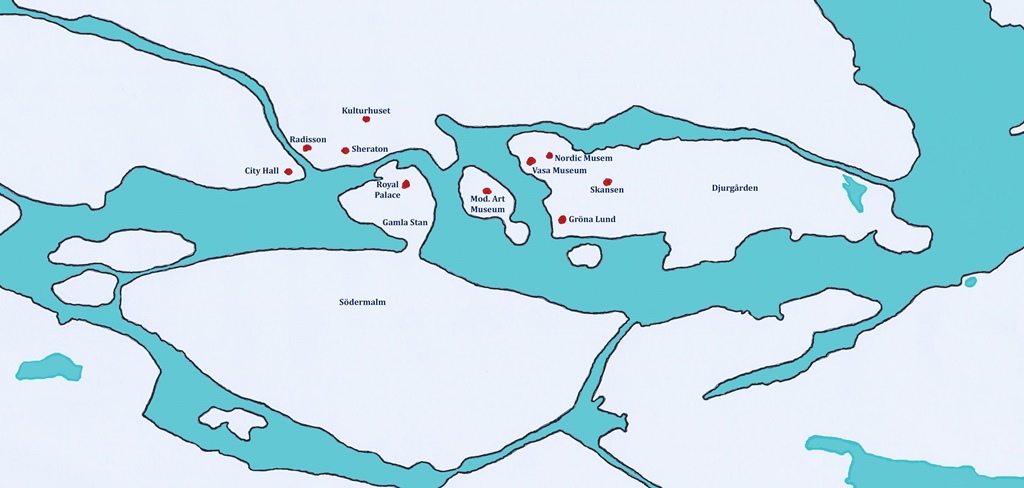
Central Stockholm
The palace was not the original structure in northeast Gamla Stan. Around the end of the Viking
era, when post-glacial rebound had reduced the navigable routes into Lake Mälaren to two (known
as Norrström and Söderström), these two routes passed to the immediate north and
south of Stadsholmen. This made the island a natural place to put a fortress, both for defense
and for the collection of customs duties. The result was a castle, which grew as the centuries
passed into Tre Kronor (“three crowns”) Palace.
Model of Tre Kronor Castle
Tre Kronor was destroyed by fire in 1697, and it was immediately determined that a new palace
would be built on the same spot. The design work was assigned to Nicodemus Tessin the Younger,
who came up with a design in the baroque style that was popular at the time (Tessin had studied
under the master of Italian baroque, Gian Lorenzo Bernini). Construction was interrupted by
the Great Northern War with Russia, and the new palace was not ready to be occupied until 1754
(interior work continued into the 1770s; by this time Tessin had been replaced on account of
death, and the main work was completed by Carl Hårleman). The outside of the palace has not
been changed significantly since its completion.
To see this massive building, we first needed to get from our hotel on the mainland to Gamla
Stan. We headed downhill (the weather was pleasant, though on the breezy side) and soon
reached the waterfront. Any of a number of bridges can be used to cross Norrström at this
point – we chose one called Vasabron. Some interesting things can be seen from this
bridge. One of the less interesting is the next bridge to the west, the Centralbron, a
modern bridge built to carry modern traffic. Beyond this bridge we could see the Stockholm
City Hall, which has a distinctive tower. We didn’t get a chance to visit this building, but
apparently it has an impressive interior. This is where the Nobel Prize Banquet is held every
year, immediately following the awarding of the Nobel Prizes (except for the Peace Prize,
which is awarded in Oslo; Stockholm’s actual awards ceremony takes place in the Stockholm
Concert Hall). The next bridge to the east (the Riksbron), though quite short, has special
significance, in that it marks the boundary between Lake Mälaren and the Baltic Sea; there’s a
sluice gate underneath it that regulates the level of the lake.
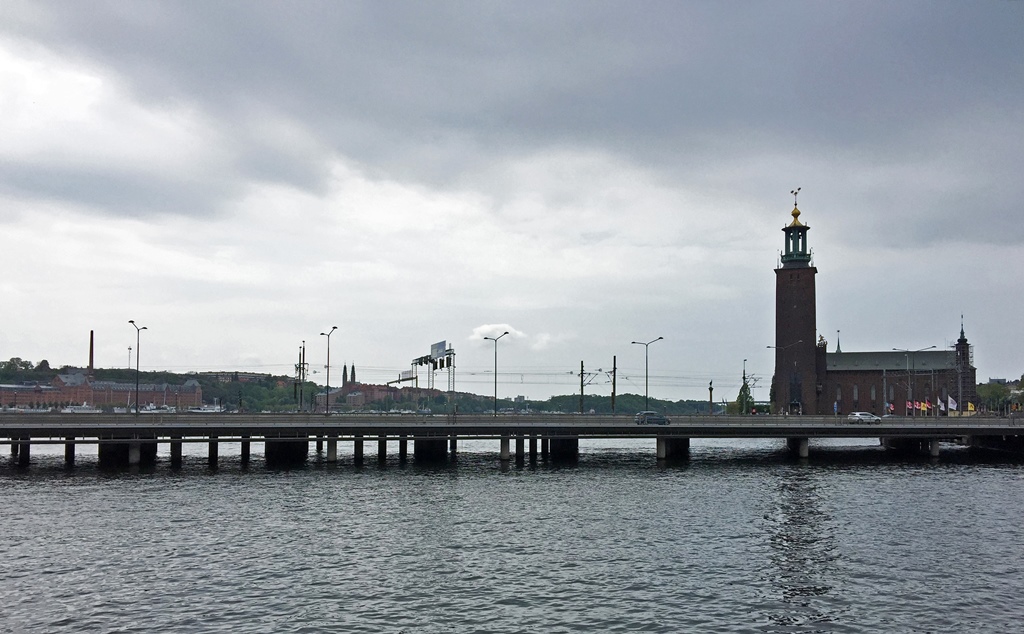
Centralbron and City Hall
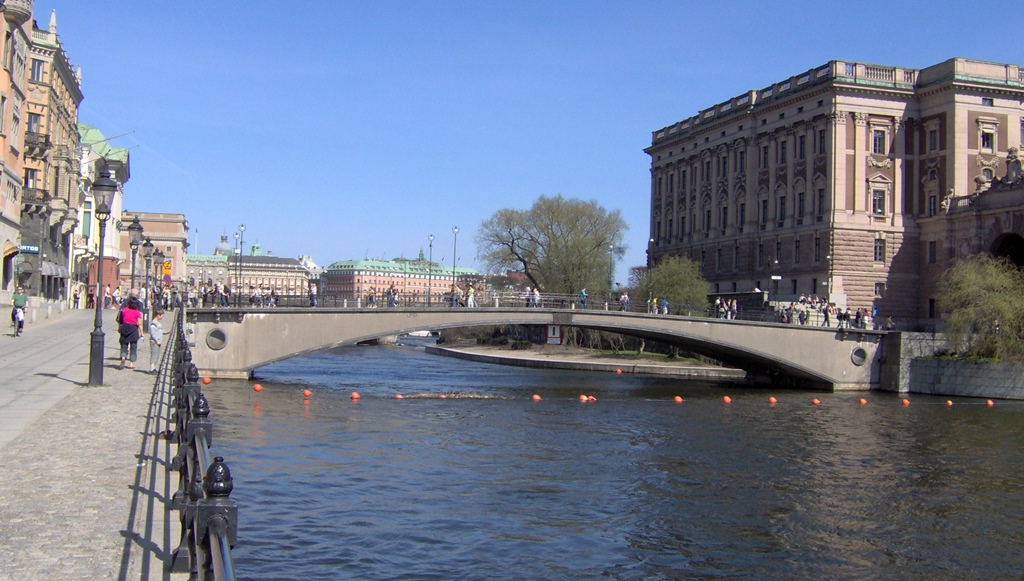
Riksbron
Over on the Gamla Stan side of the bridge, we could see the large, brick-red Norstedt Building,
the main office of Sweden’s oldest publishing house (Norstedts Förlag, founded in 1823).
Norstedt Building
On arriving at the Gamla Stan end of the bridge, we could see a church off to the right with
a tall spire, located just beyond the Norstedt Building. This is the Riddarholmen Church,
which was once used as the principal burial place of members of the royal family. The last
Swedish monarch buried here was Gustaf V, who died in 1950. The Royal Cemetery, located on
an island in a lake just north of Central Stockholm, has been used for royal family burials
since then. The church was first built in the 13th Century as part of an abbey. After the
Protestant Reformation, the abbey was dissolved, but the church was retained as a Lutheran
church. A spire added in the 16th Century was destroyed by a lightning strike in 1835, after
which the current spire (made of cast iron) was added. We didn’t visit the church, as the
Royal Palace was in the opposite direction.
Riddarholmen Church
But before turning in the direction of the palace, we couldn’t help but notice a large building
in front of us. This is the House of Nobility, built in the 17th Century. At the time, the
Swedish Parliament was organized to include representatives from four social estates: the
nobility, the clergy, the burghers (property-owning commoners, not tasty fast food) and the
yeomanry (freehold farmers). The House of Nobility was built as a meeting place for the
nobility estate, but was only used for this purpose until 1866, when the parliament was
reorganized as a more modern bicameral legislature (this became unicameral in 1971). Since
then, the House has mainly operated in an unofficial capacity, representing the interests of
the nobility, which meets here once every three years. The House has cultural programs, as
well as access to information for genealogical or historical research. It is also possible to
rent parts of the House for private functions.
House of Nobility
Completing our turn to the left, it didn’t take long before we found ourselves among the Really
Big Buildings. The first one was on the left, on the other side of a narrow canal. The far
side of the canal is another island in the Gamla Stan group, an island known as
Helgeandsholmen. Nearly half of this island is occupied by the Parliament House, the
unicameral home of Sweden’s aforementioned legislature. The Parliament House was built in
neoclassical style between 1897 and 1905, and is actually a two-building complex. We didn’t visit.
Parliament House
The entrance to the Royal Palace, across the canal from the Parliament House and very
difficult to miss, was on the west side of the building, but getting to it was difficult,
as there were hordes of people in the way. They were behind ropes in the palace courtyard
and appeared to be waiting for something. We joined them, as it was clear that they knew
more than we did. We were soon rewarded as a marching band came into view, followed by a
bunch of soldiers with guns. We’d stumbled into the afternoon’s Changing of the Guard
ceremony. We tried to find a good vantage point (difficult, as we’d arrived later than
everyone else) and watched the band and the soldiers go through their maneuvers.

Arrival of Band and New Guard

Old Guard departing

Band Performing

Departure of Band
New Guard
Once the guard had been thoroughly changed and the spectators had more or less cleared out, we
headed for the palace entrance and bought tickets for exploration of the state apartments.
This got us into a representative variety of the palace’s rooms (obviously a small fraction of
the total). To get to them required passing through an entrance hall and taking some stairs.
This was not the only hallway and stairway we would be taking, but they all had a similar look
to them. Tapestries could usually be found in the stairwells.
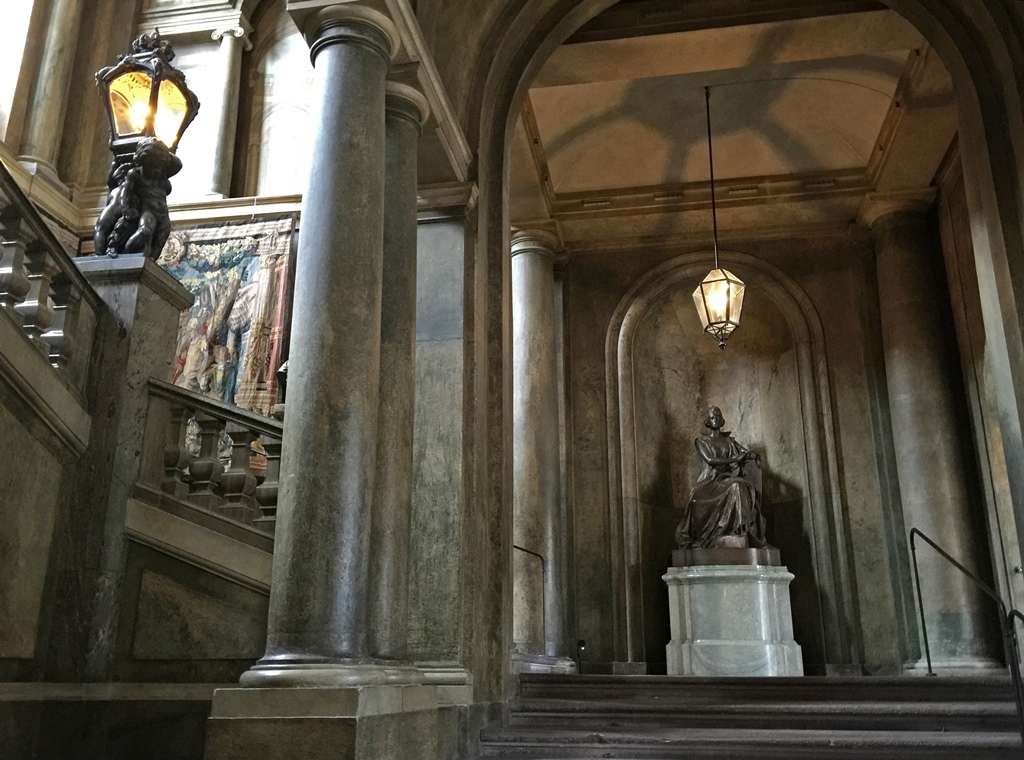
Entrance Hall
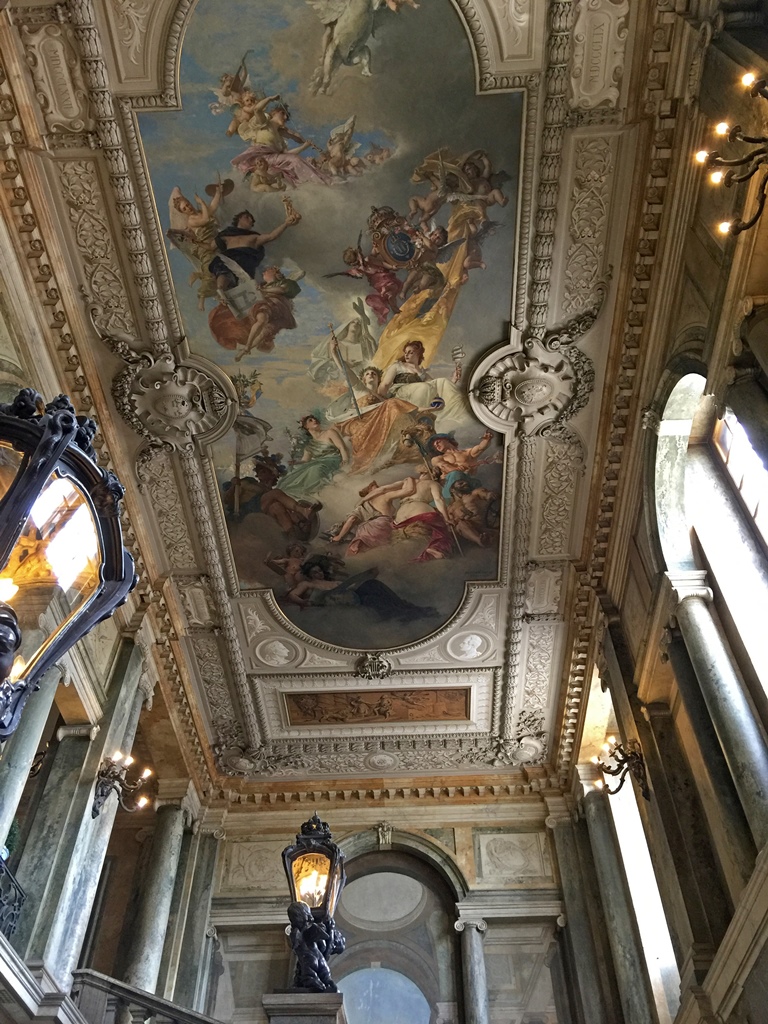
Ceiling Above Stairway
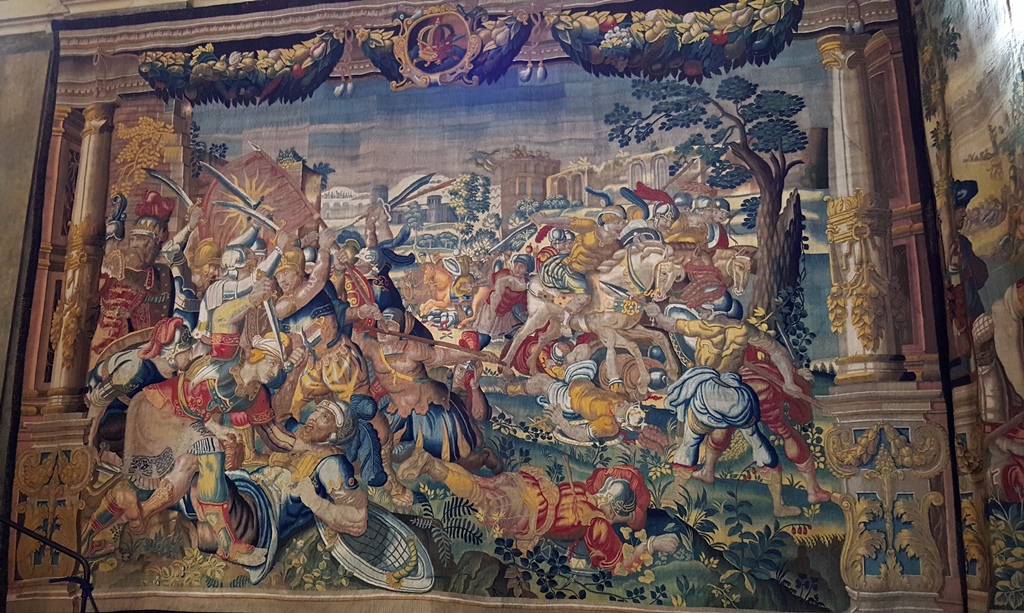
Stairway Tapestry
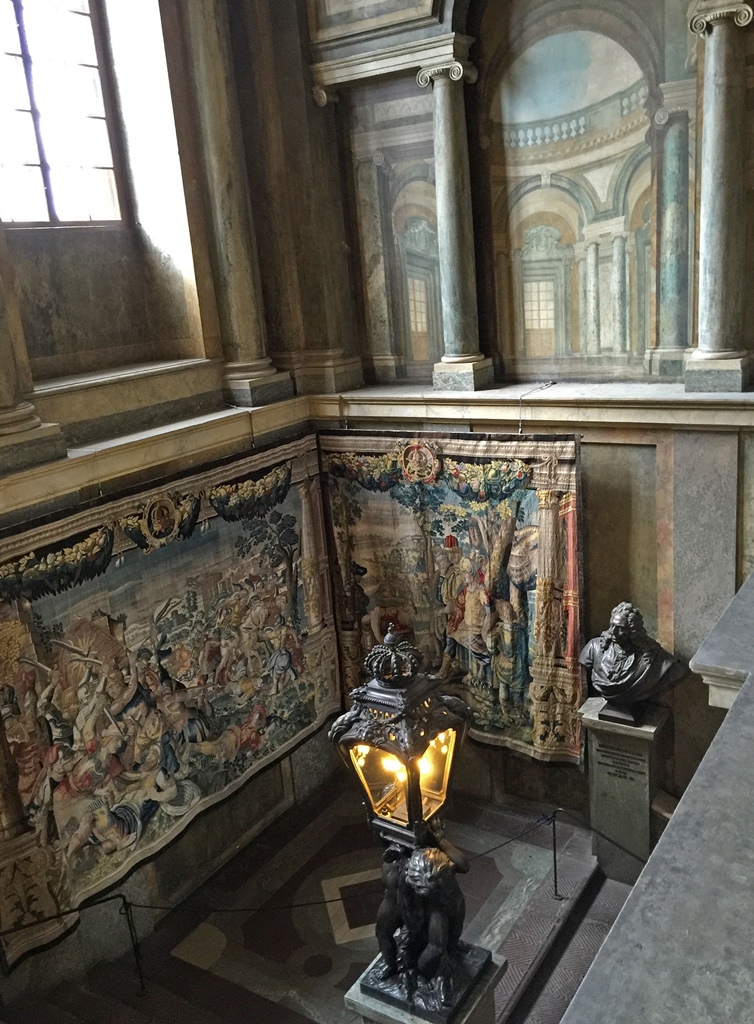
Tapestries, Bust and Lamp in Stairwell
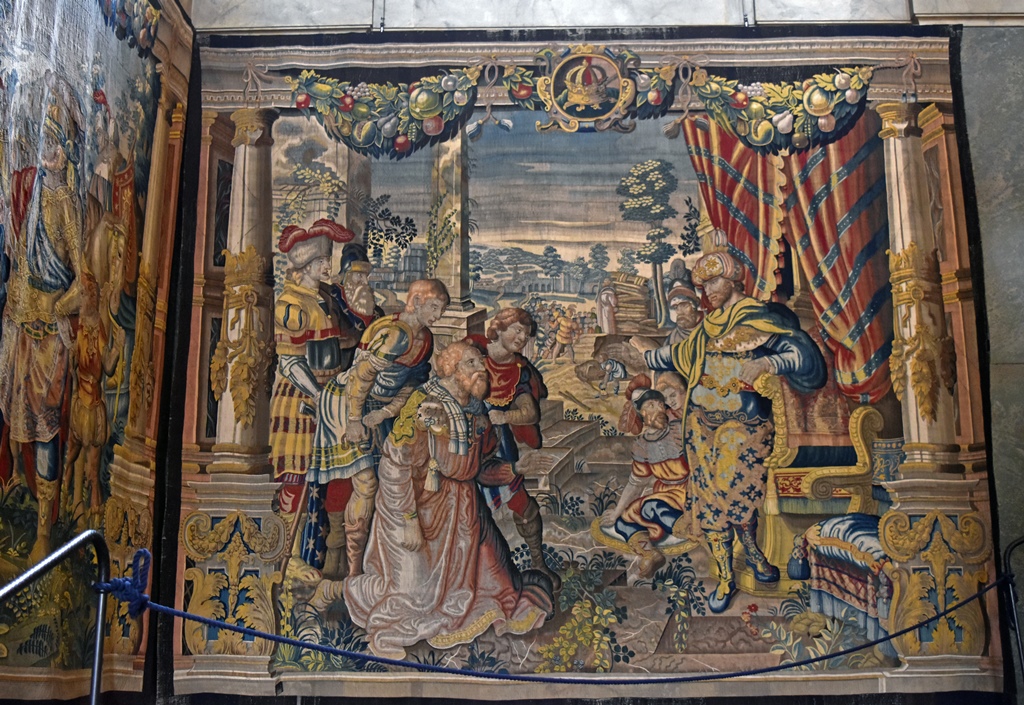
Tapestry in Stairwell
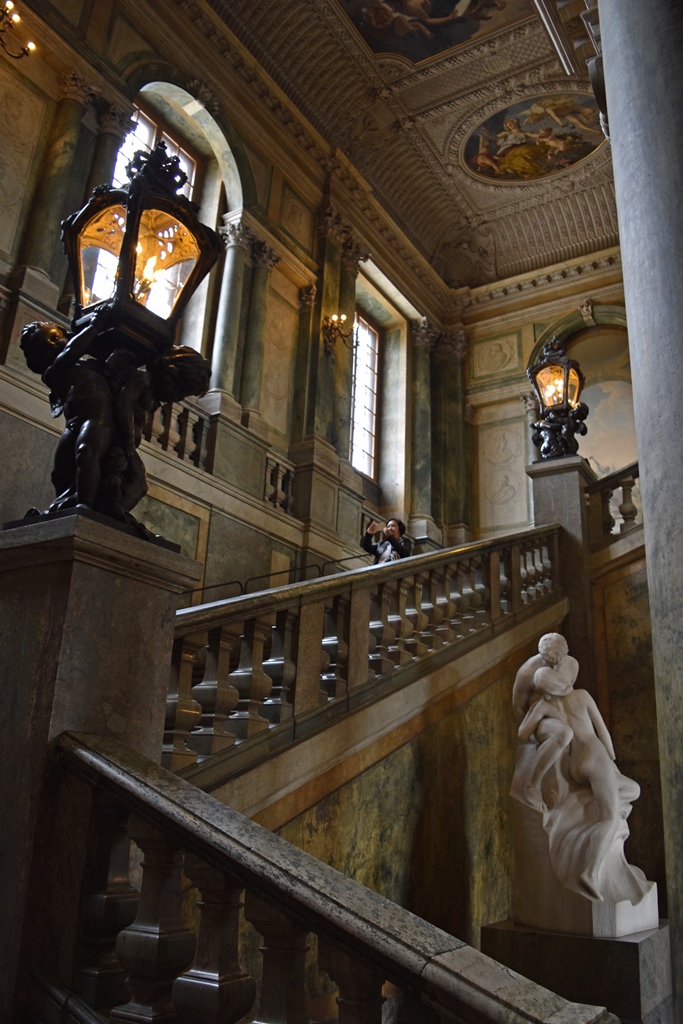
Nella on Staircase
We soon entered the Apartments of the Orders of Chivalry, a set of rooms in which medals
and other honorary decorations were on display. These rooms were used by the Swedish
Supreme Court until 1949. Here are some of the displays that can now be found there:
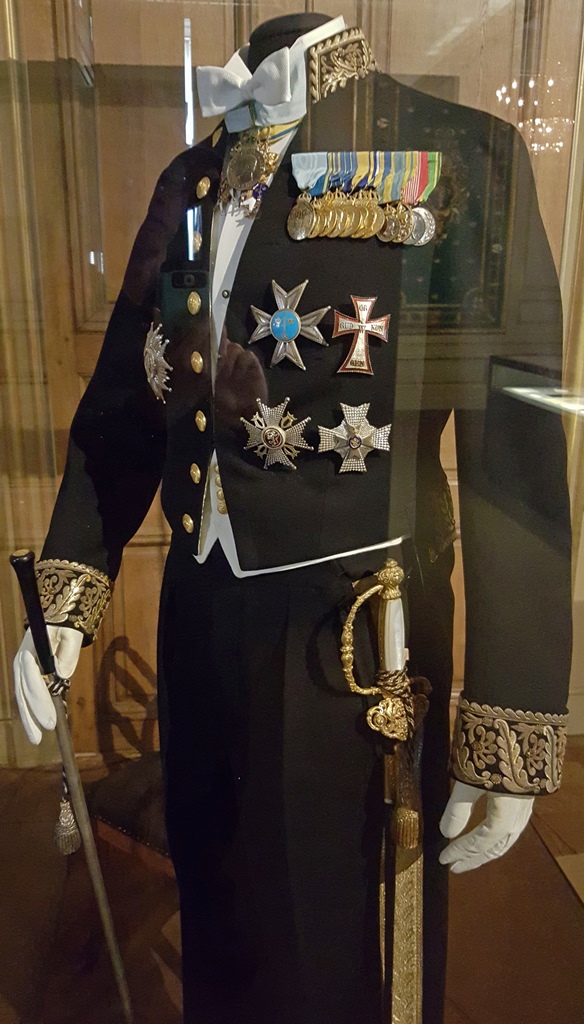
Uniform of a Ceremonial Master (1979-87)
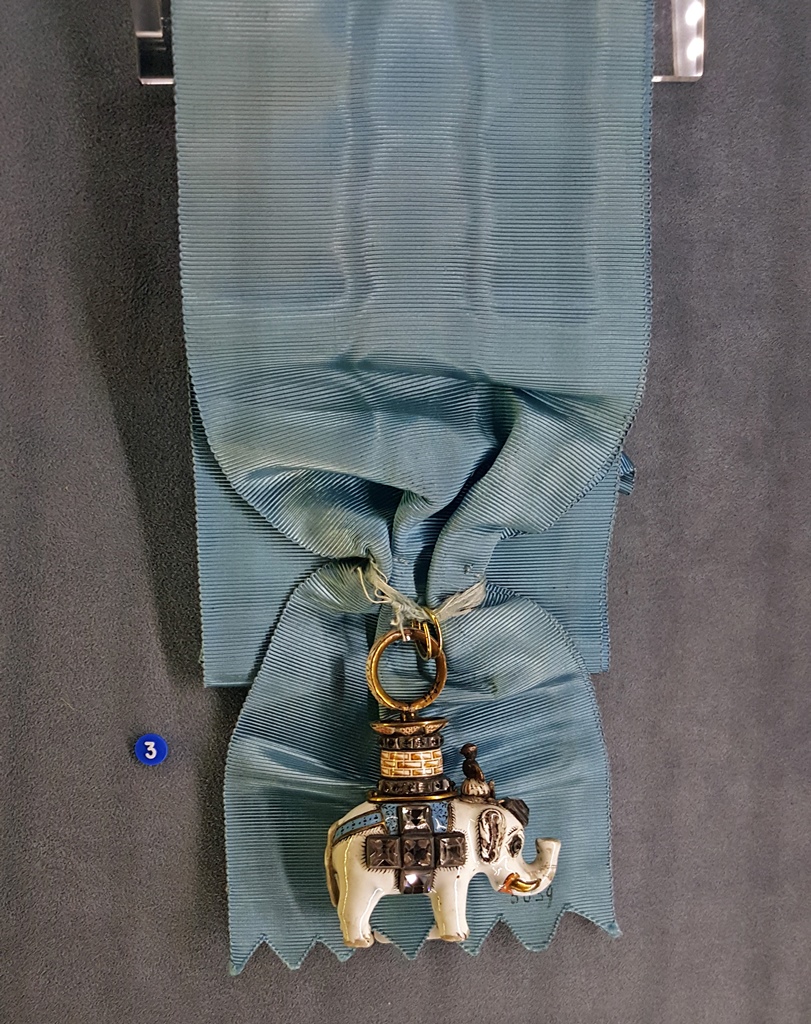
The Order of the Elephant (1846)
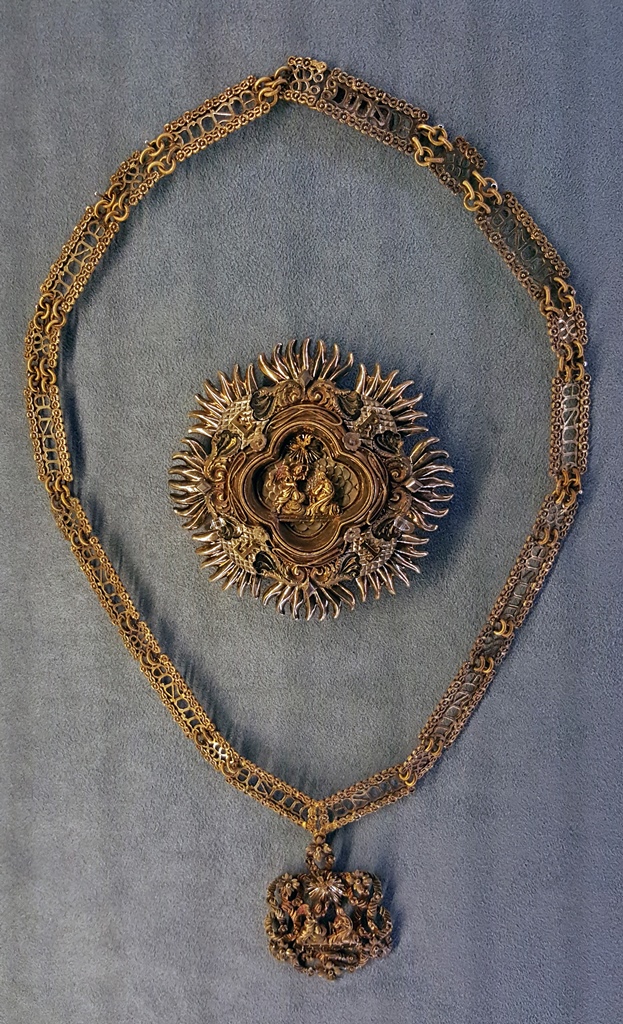
The Order of the Annunciation
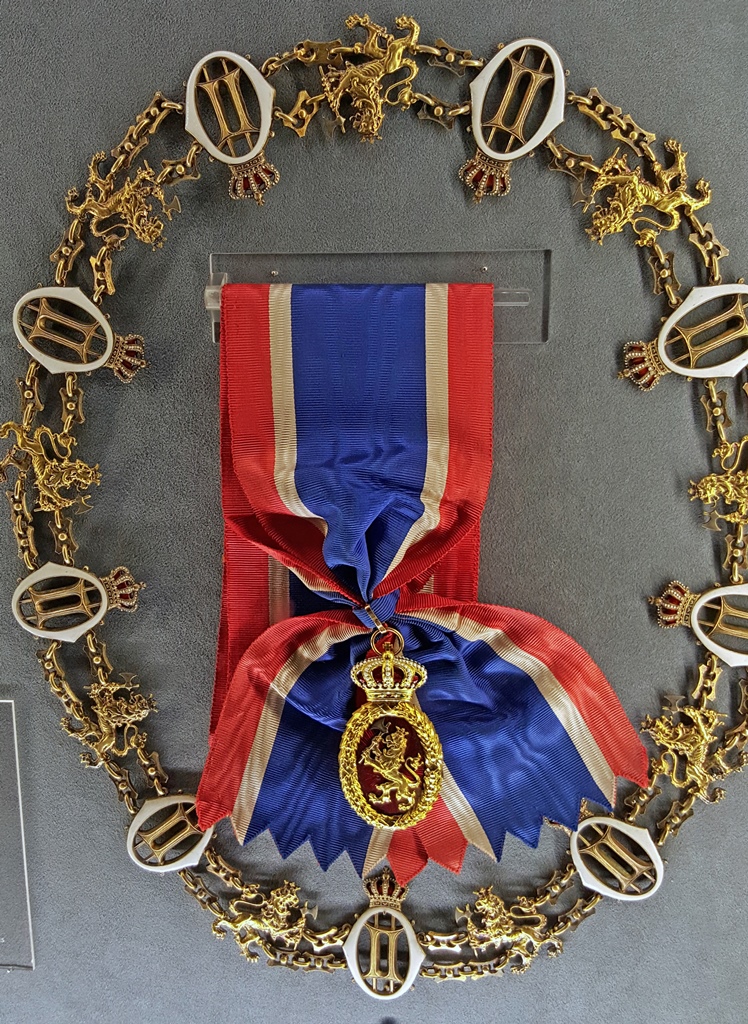
The Order of the Norwegian Lion (1904)
Collar with Miniatures
From here we entered the Hall of State, a room that was used for Parliamentary meetings
which were chaired by the King. Normally a throne known as the Silver Throne (acquired for
Queen Kristina’s coronation in 1650) is on display here, but for some reason was not there
for our visit. Fortunately photos of such things are easily found on the Internet.
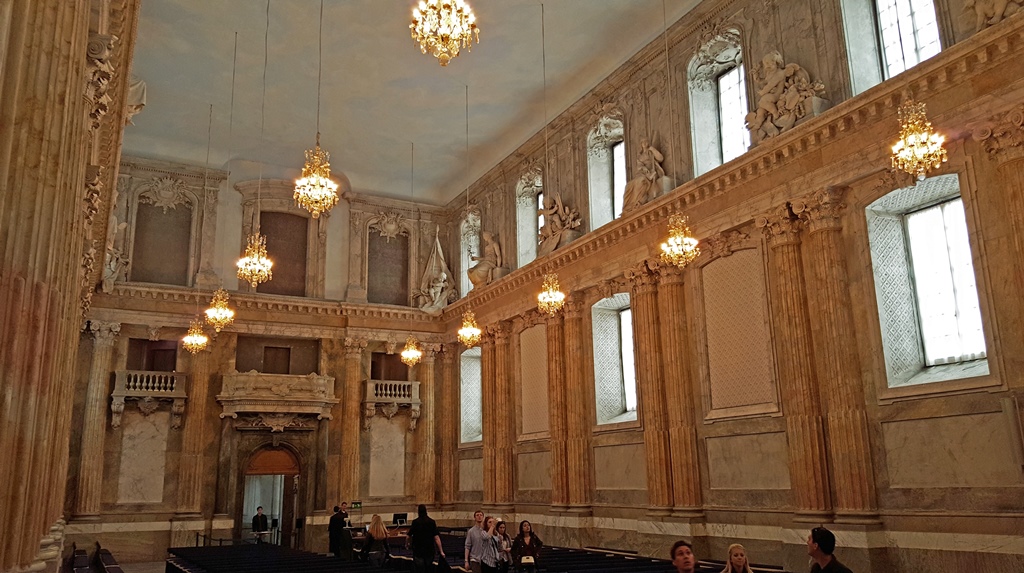
Hall of State
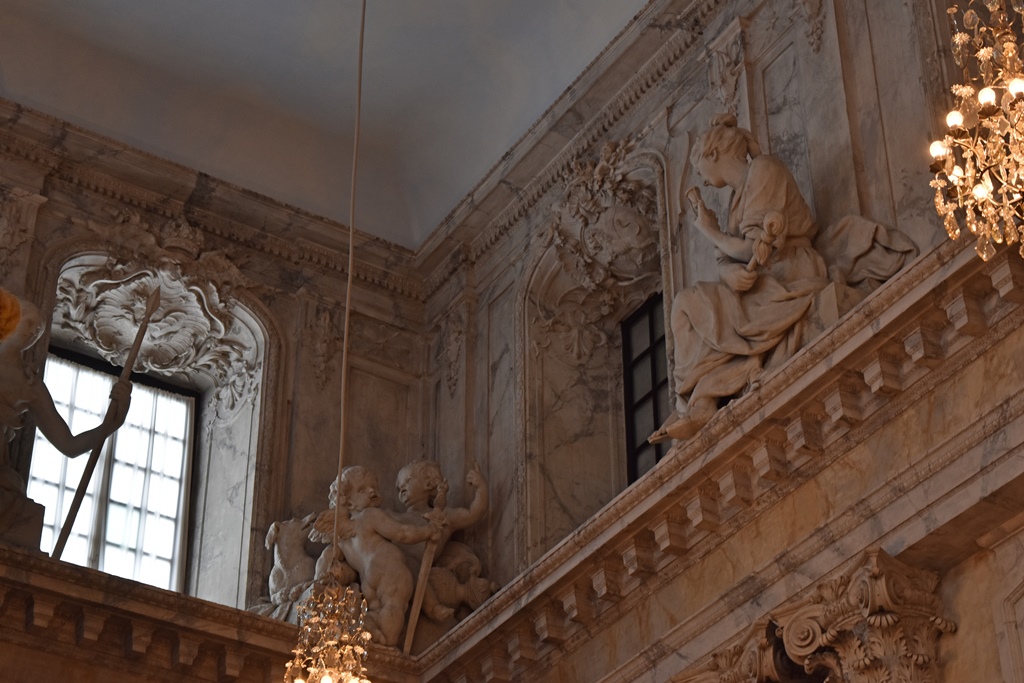
Detail, Hall of State
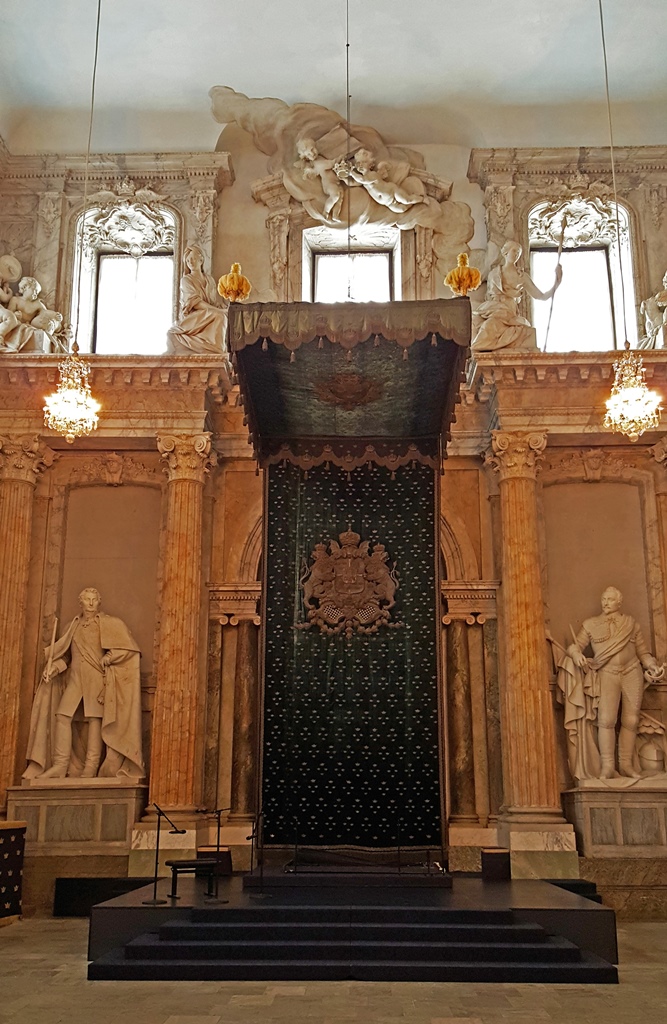
Platform and Canopy for Silver Throne
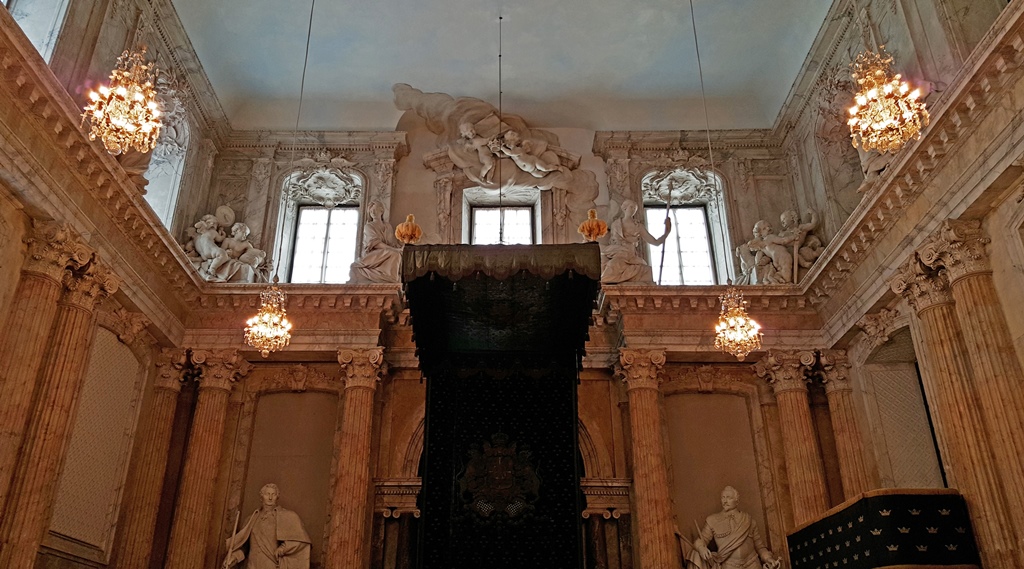
Statuary and Canopy for Silver Throne
Silver Throne
In the vicinity of the Hall of State, there are a number of rooms collectively known as the
Bernadotte Apartments. These rooms were used as a royal residence during some of the years
when royal families were actually living in their official residence. They haven’t been used
for this purpose since the reign of Oskar II, who died in 1907. At present they are used by
the King for meetings and ceremonial purposes. As we walked through them, we noticed that
some of the rooms had an impressive collection of interesting clocks on display.
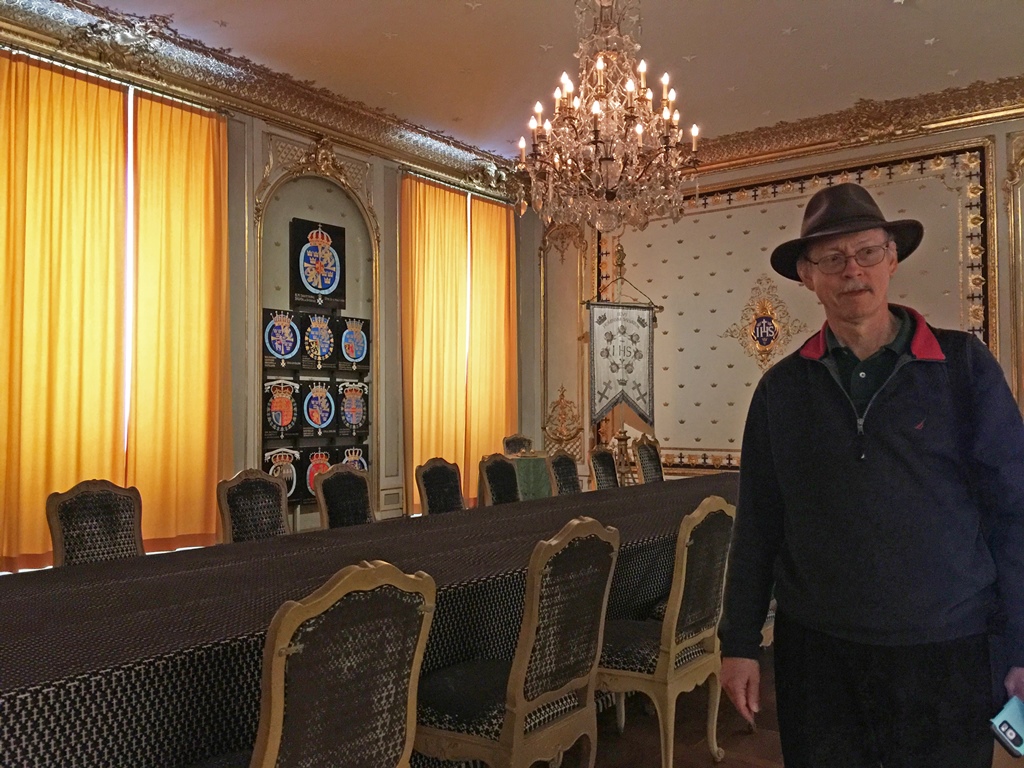
Bob in Meeting Room, Bernadotte Apartments
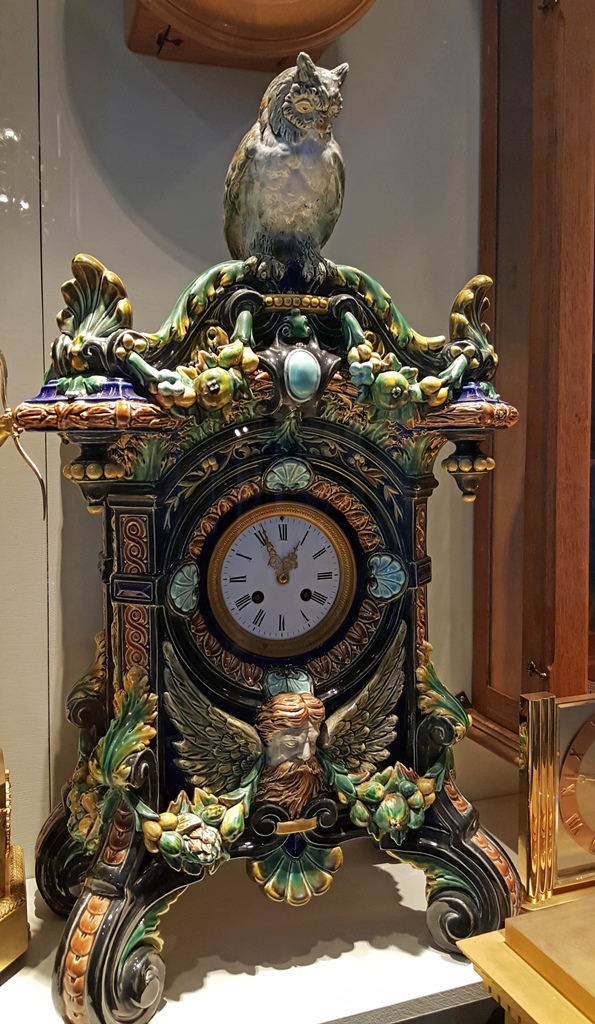
Owl Clock
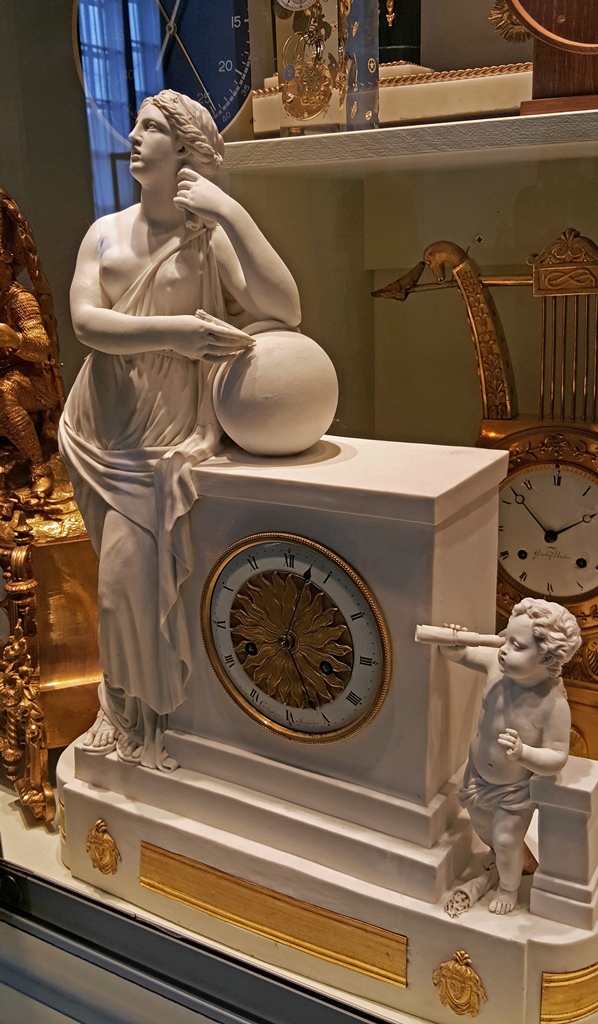
Clock with Venus and Cupid
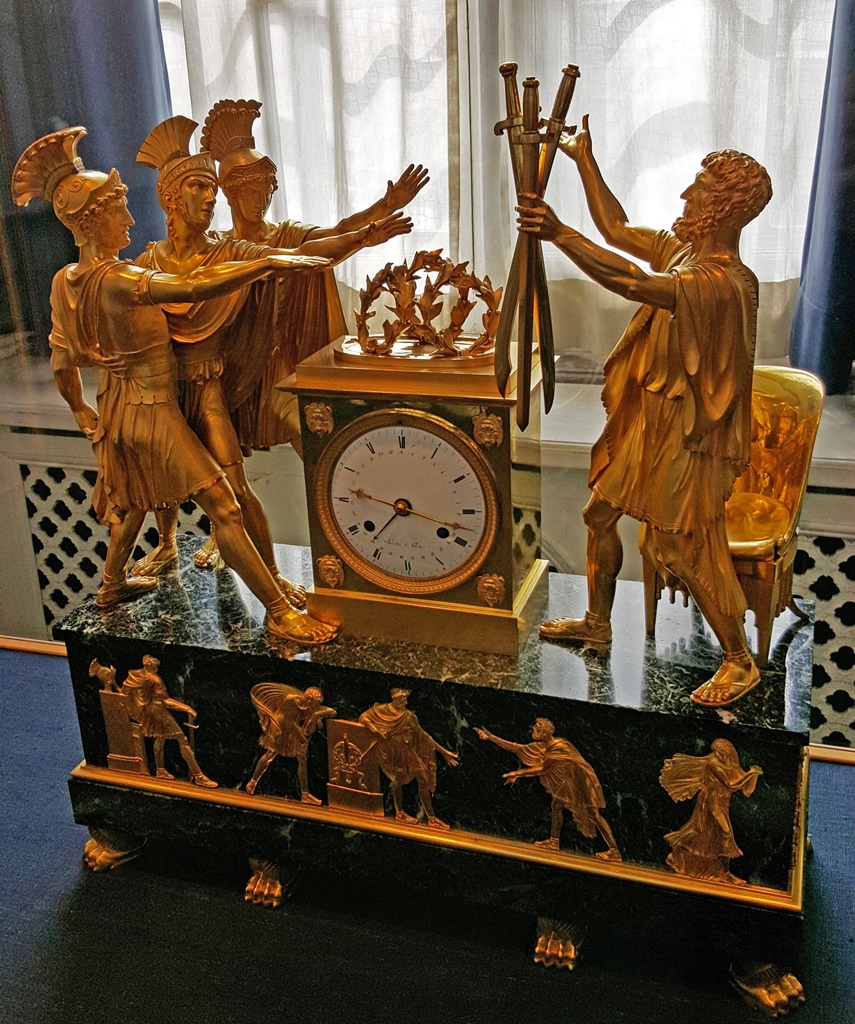
Table Clock with Oath of the Horatii
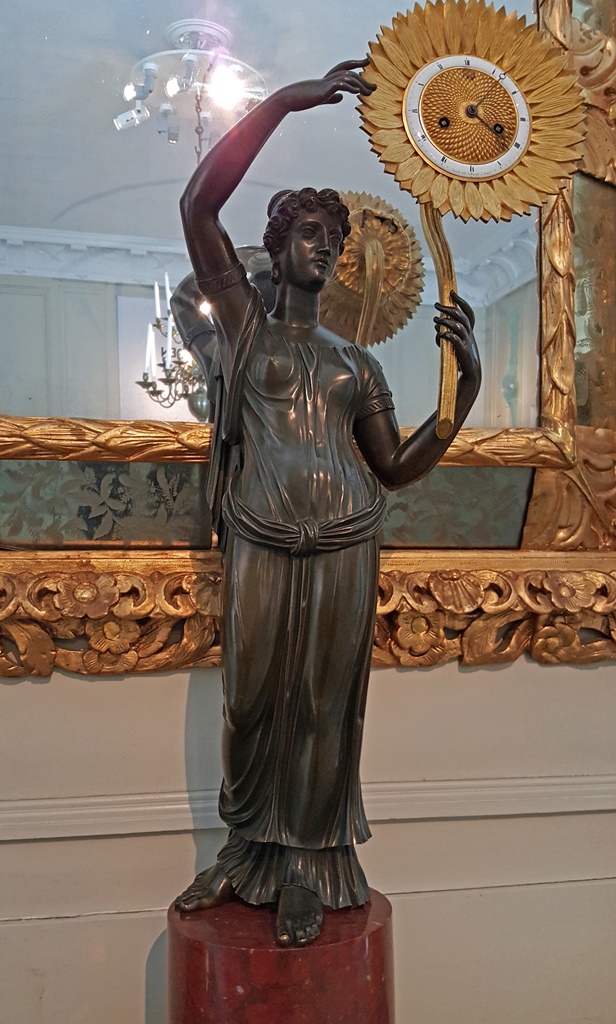
Clock with Water Nymph Clytia, Gérard-Jean Galle (ca. 1820)
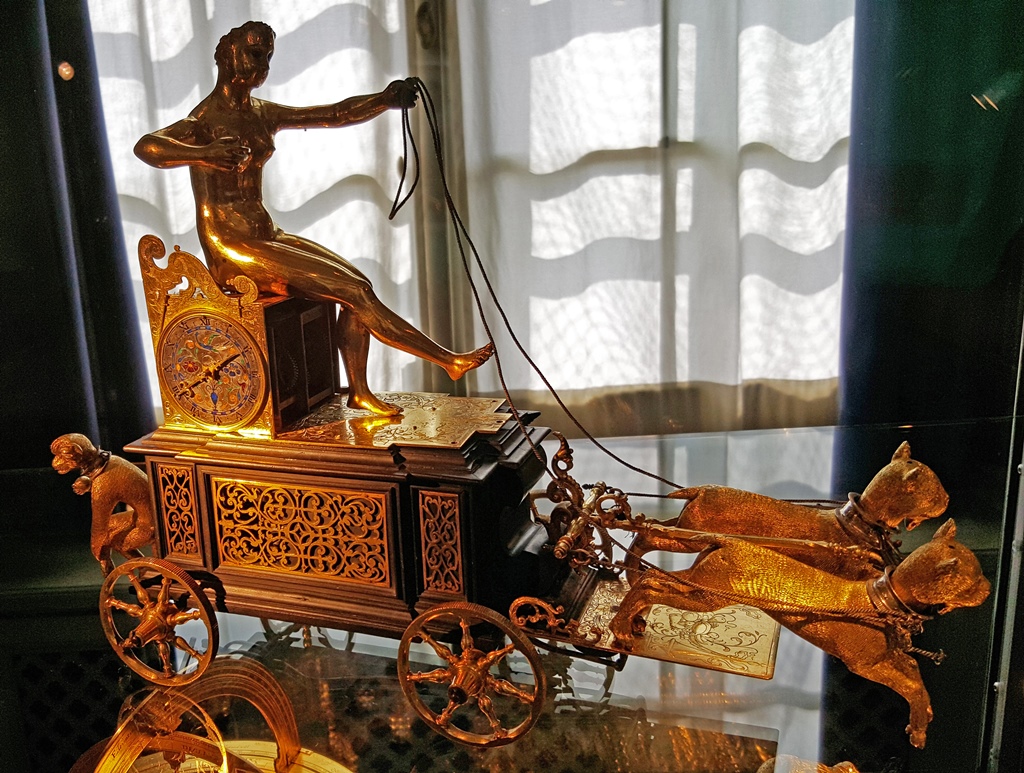
Automaton Clock with Venus in Chariot with Cats
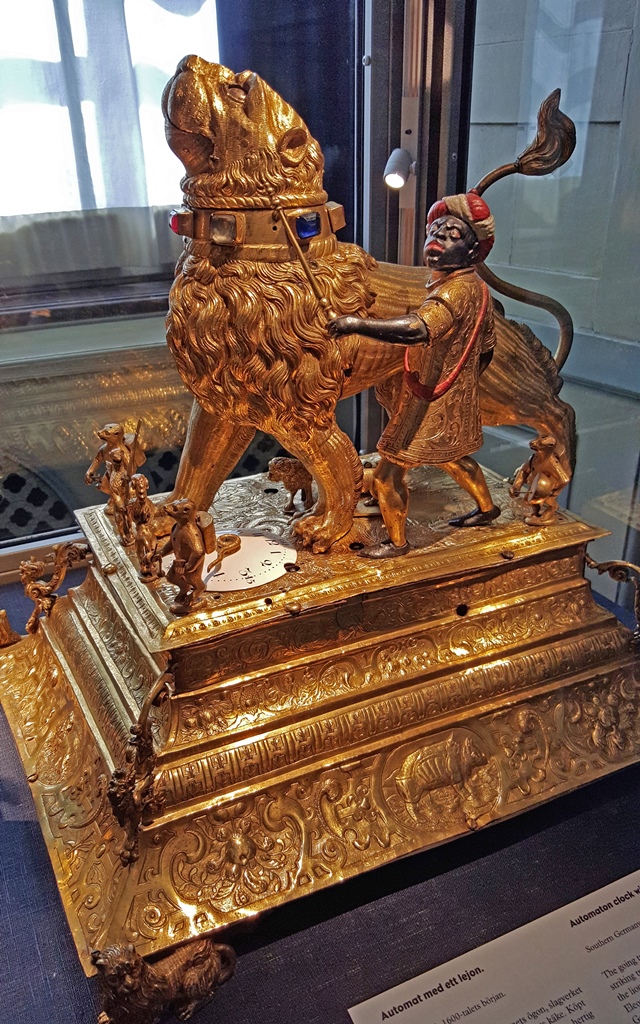
Automaton Clock with Lion, Germany (early 1600s)
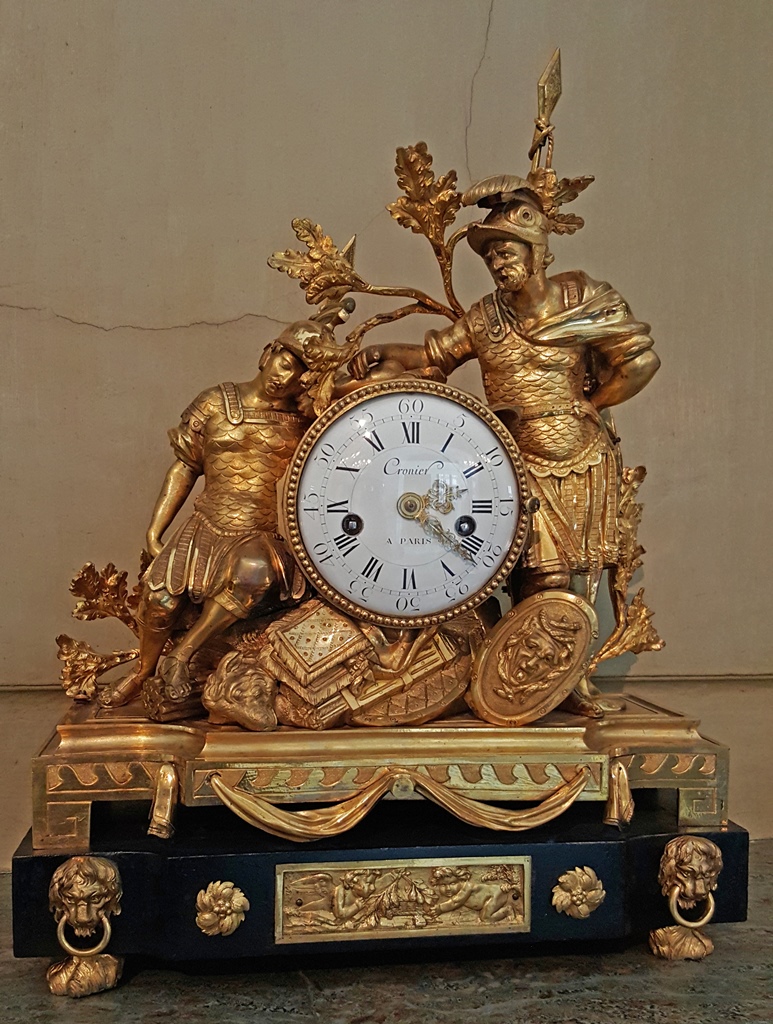
Table Clock with Soldiers
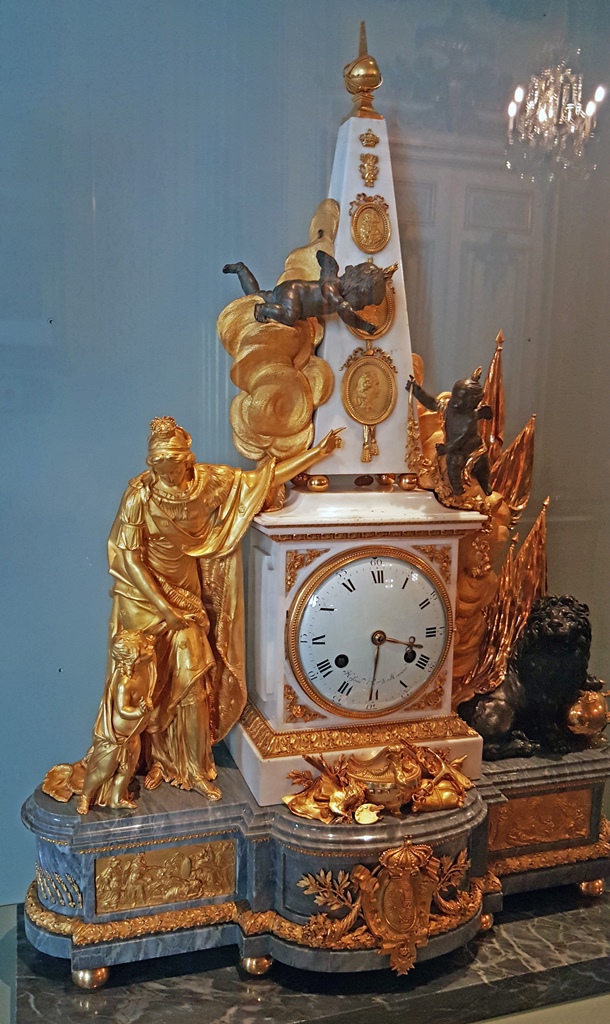
Quarter-Striking Table Clock with Obelisk (1784)
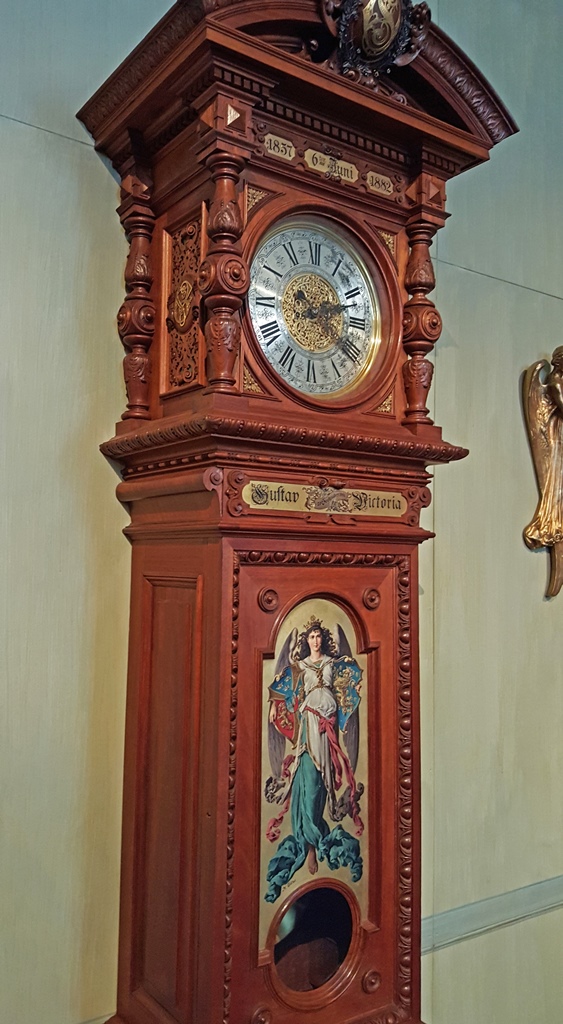
Silver Wedding Anniversary Clock (1882)
One of the apartments is known as the Pillared Hall. In this room, besides clocks and,
well, pillars, we found a large fresco on the ceiling which depicted allegorical representations
of the four seasons. See if you can guess which is which (it shouldn’t be too hard).
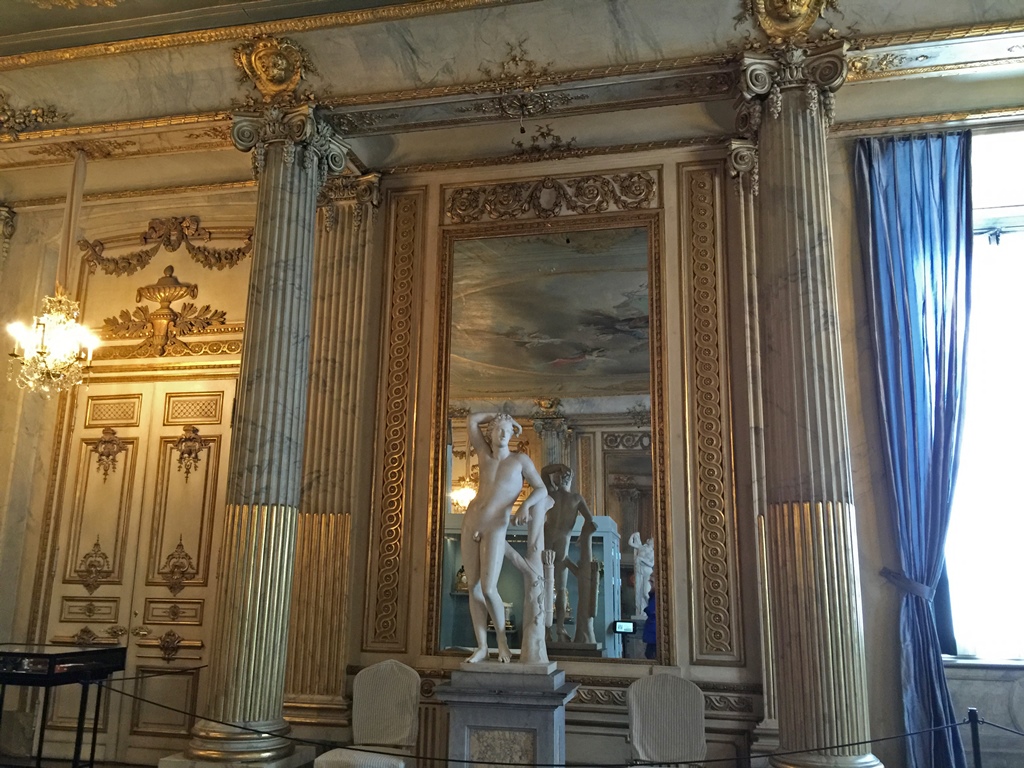
Statue of Apollino and Mirror, Pillared Hall
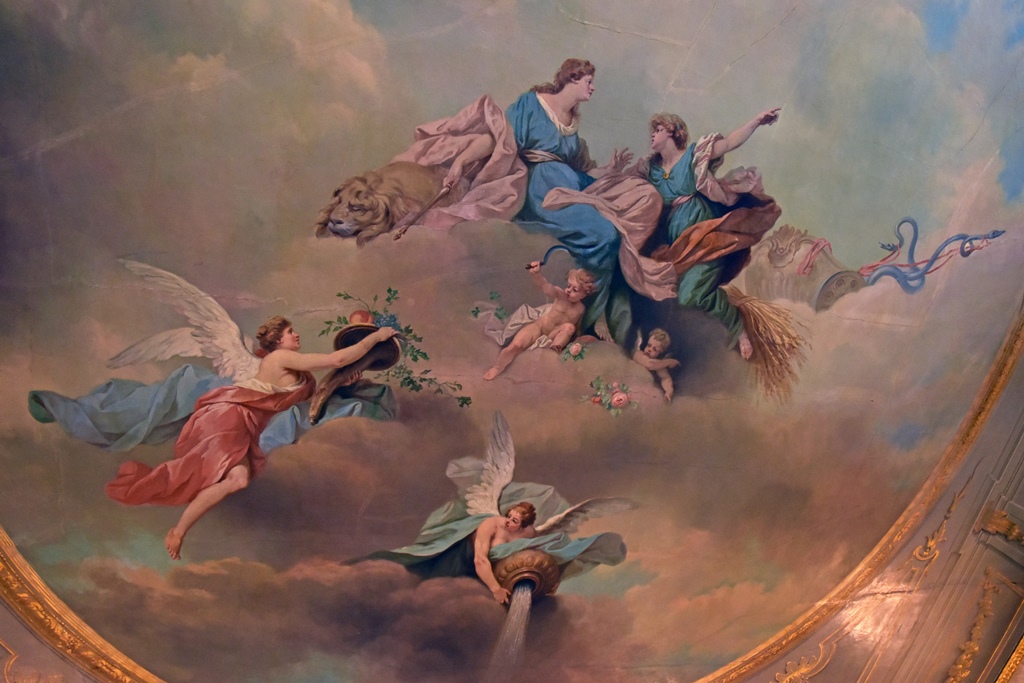
Four Seasons Fresco, Pillared Hall
The next room, the Victoria Drawing Room, was originally two rooms – an antechamber and an
audience chamber. The dividing wall was knocked out in the late 18th Century. The present
décor dates from the 1860s. It leads to the Bernadotte Gallery, which is dedicated to the
display of portraits of royal family members.
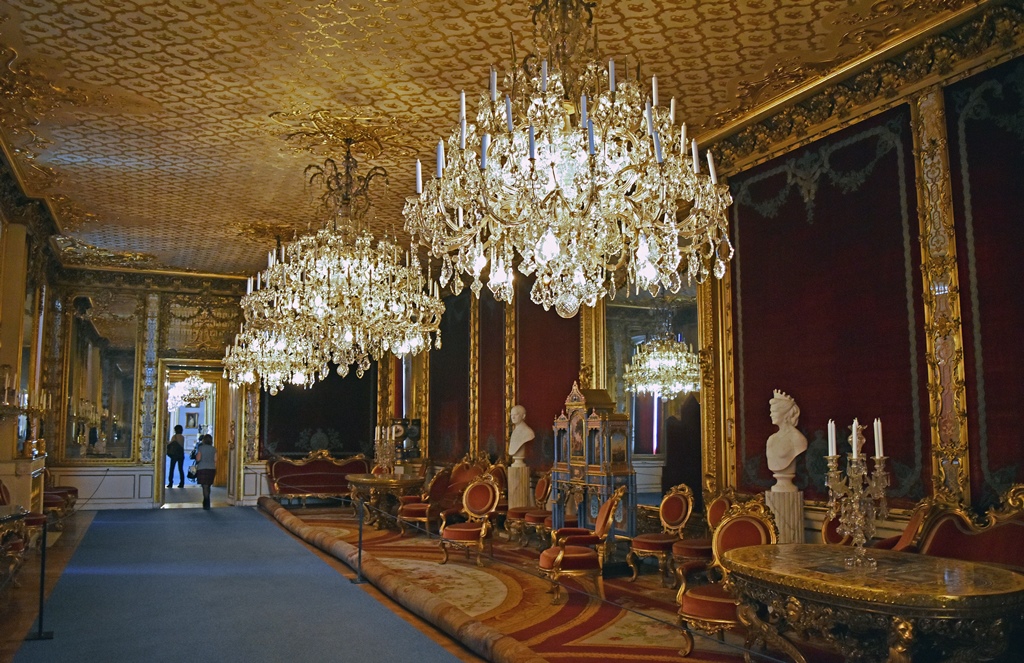
Victoria Drawing Room
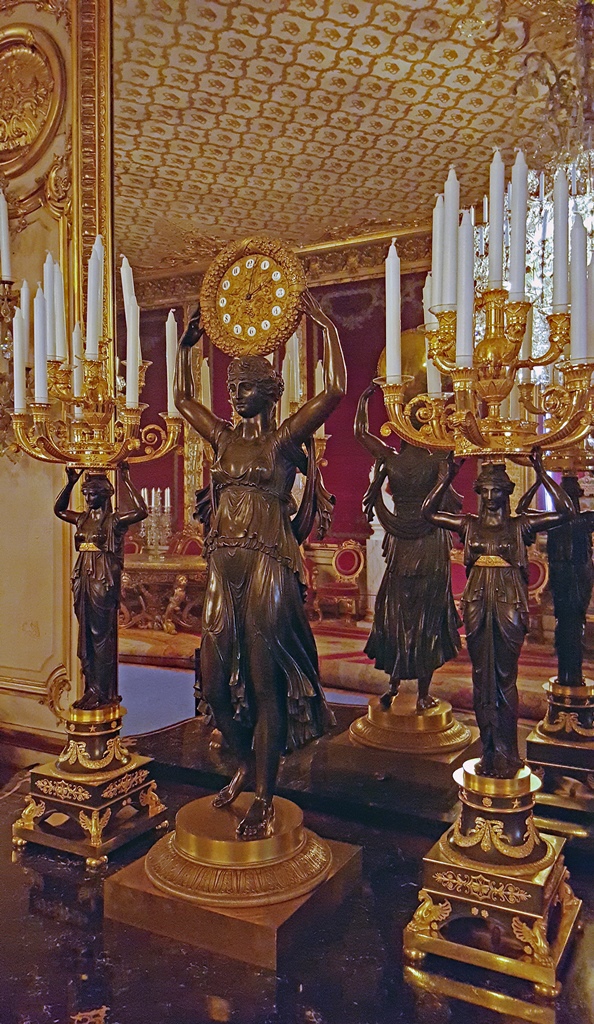
Clock and Candlesticks, Victoria Drawing Room
Bernadotte Gallery
Lovisa Ulrika of Prussia married Swedish Crown Prince Adolf Frederick in 1744 and became
Queen Consort when Adolf Frederick became King in 1751. The Lovisa Ulrika Dining Room
and its Antechamber are dedicated to her.
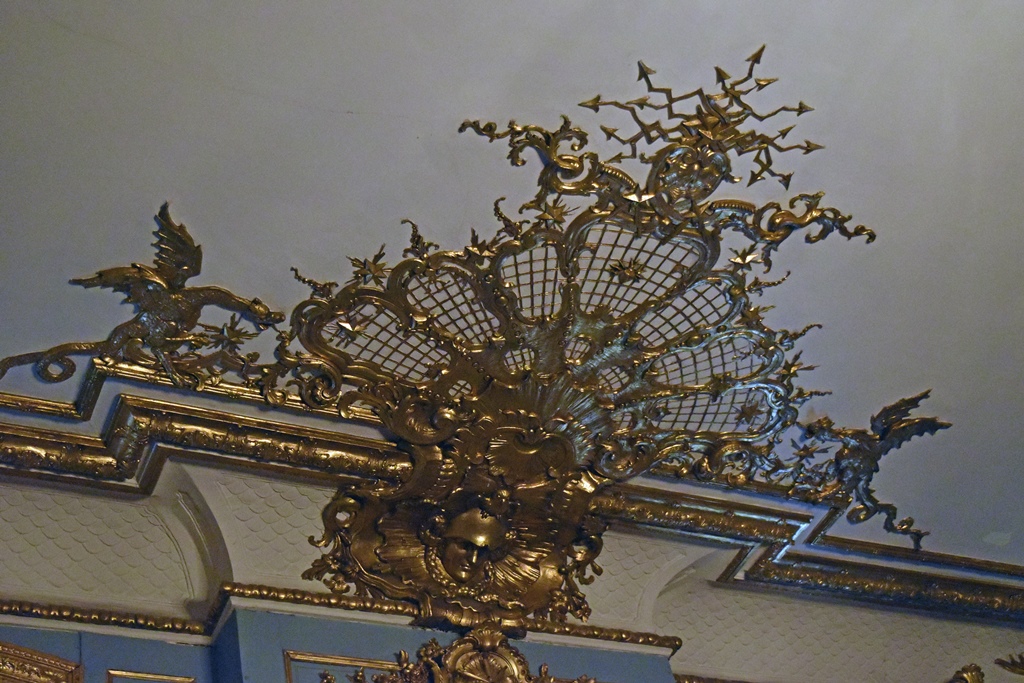
Decoration, Lovisa Ulrika's Antechamber
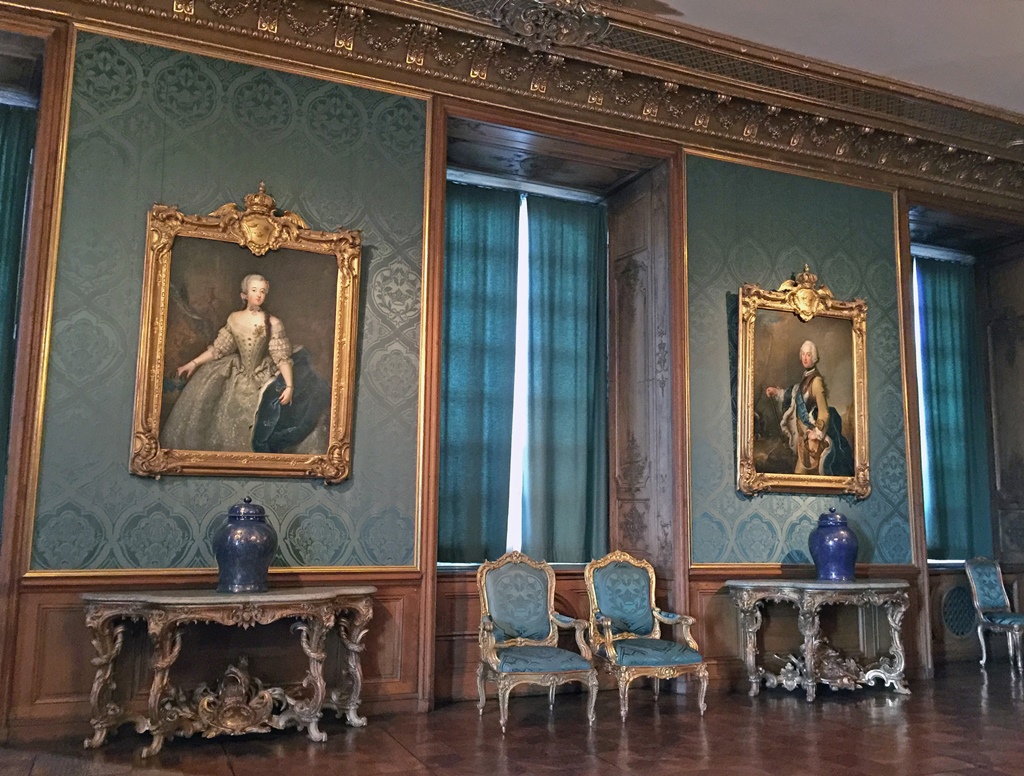
Lovisa Ulrika's Dining Room
The Council Chamber is used whenever the King and the government need to meet over
matters of state, typically three or four times a year. At one time it was used as a
dining room.
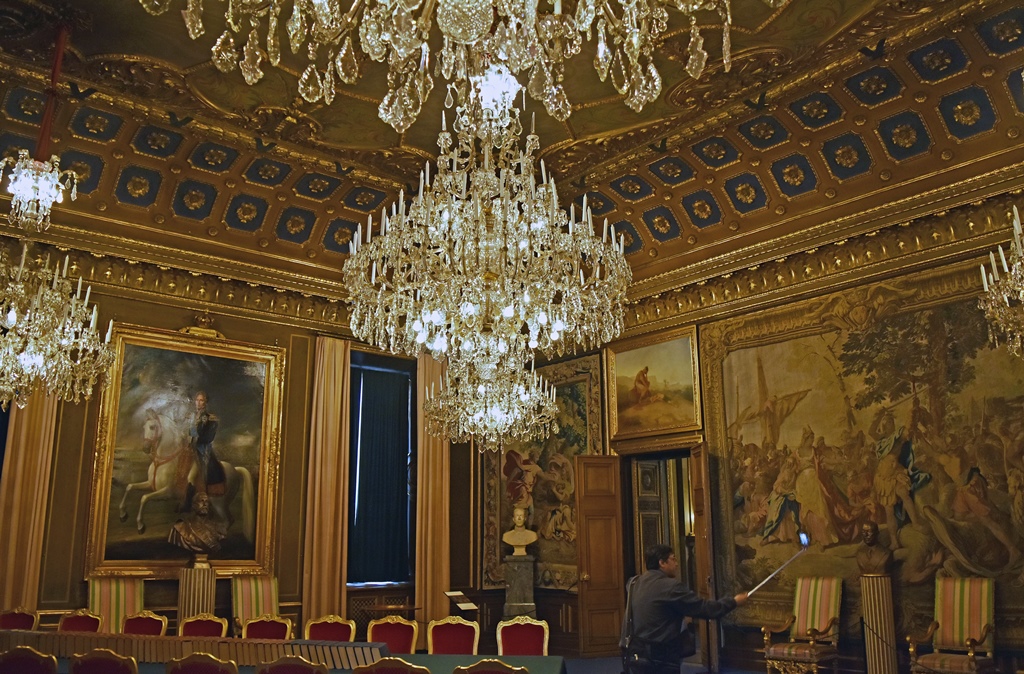
Council Chamber
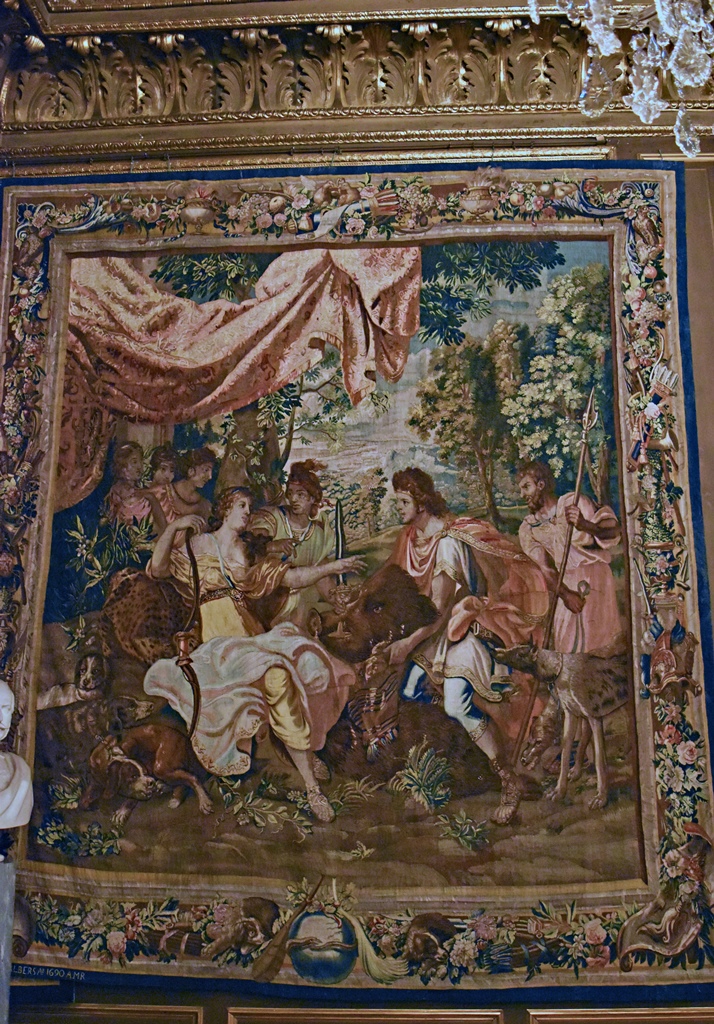
Tapestry, Council Chamber
Karl XI’s Gallery is used for state dinners when there is a need to impress. The Hall of
Mirrors from Versailles was the model for this room, and a table for 150 can be set here.
Each year the Nobel Laureates are invited to dinner here the day after the dinner at the
Stockholm City Hall.
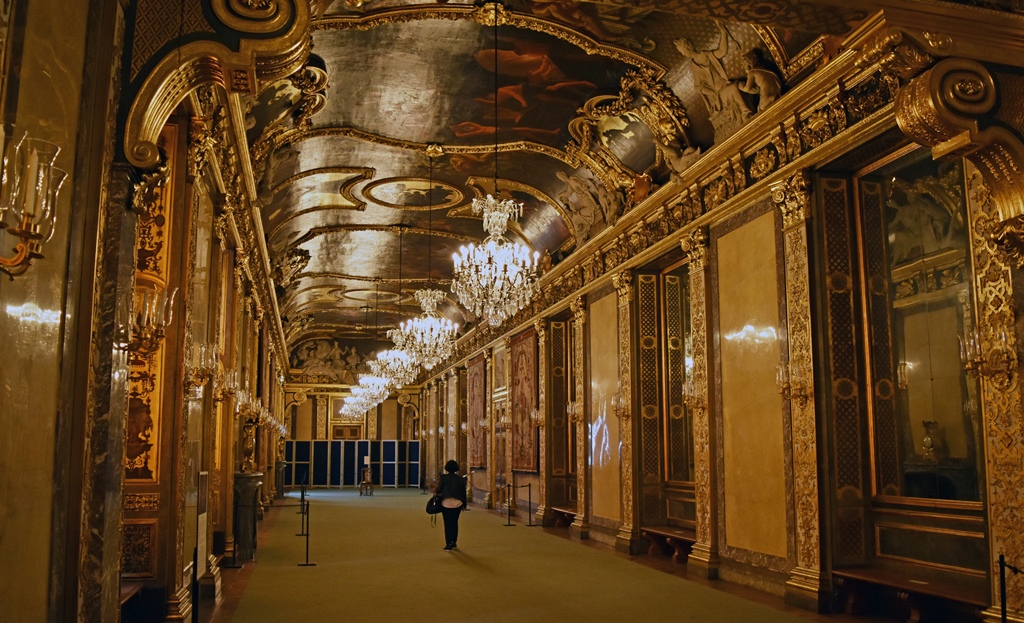
Nella in Karl XI's Gallery
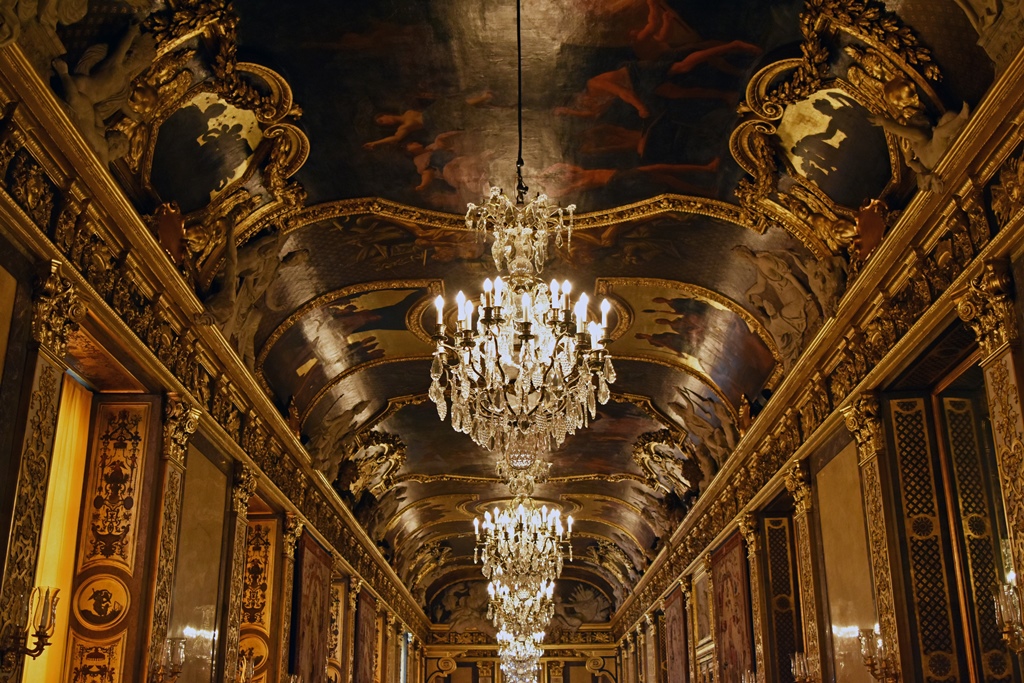
Ceiling and Chandeliers, Karl XI's Gallery
Other rooms include the Inner Salon, which almost looks like a place one could live in,
and the Great Bedchamber, which is apparently a guest room.
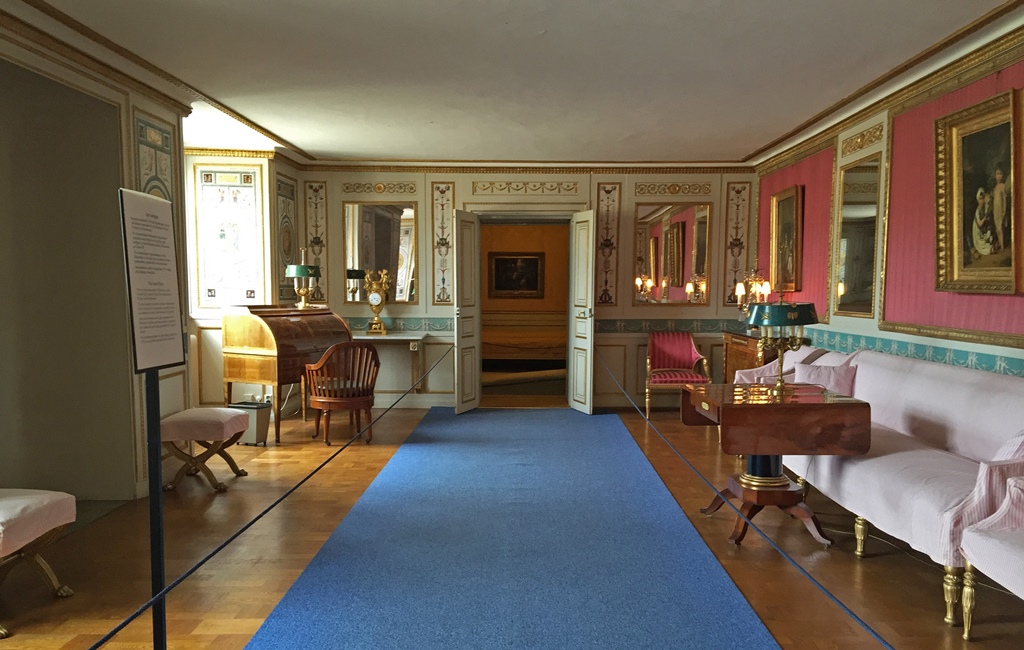
Inner Salon
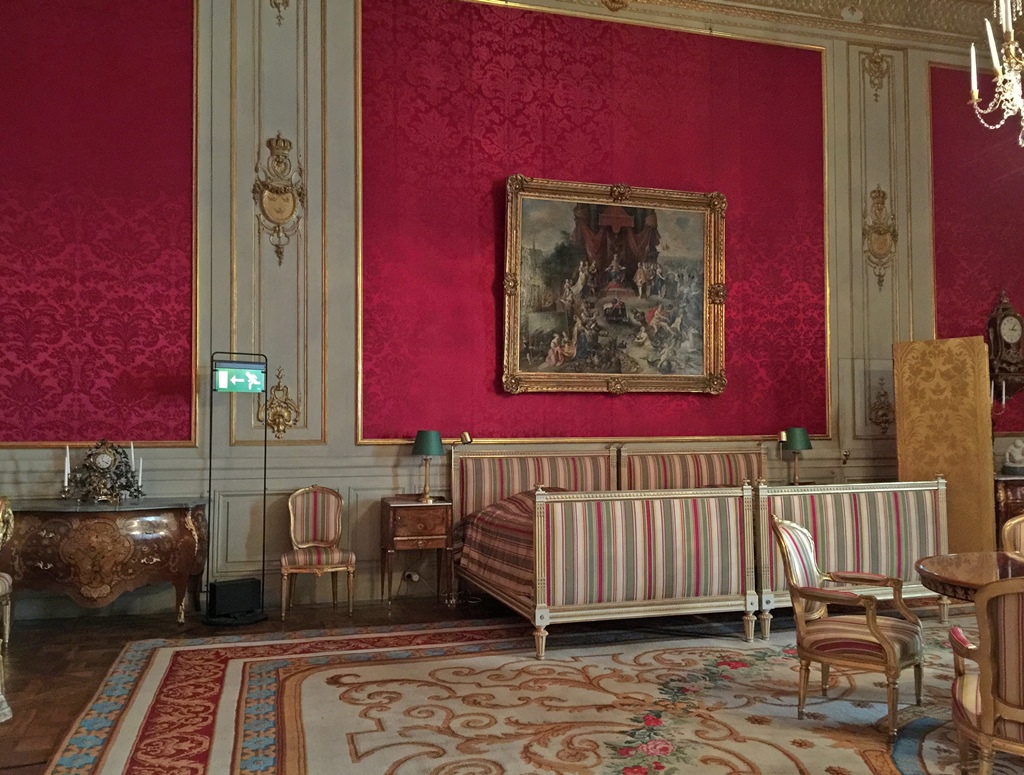
Great Bedchamber
Here are some additional decorative items from around the palace, some of which are part of a
display of selected items from the Royal Treasury:
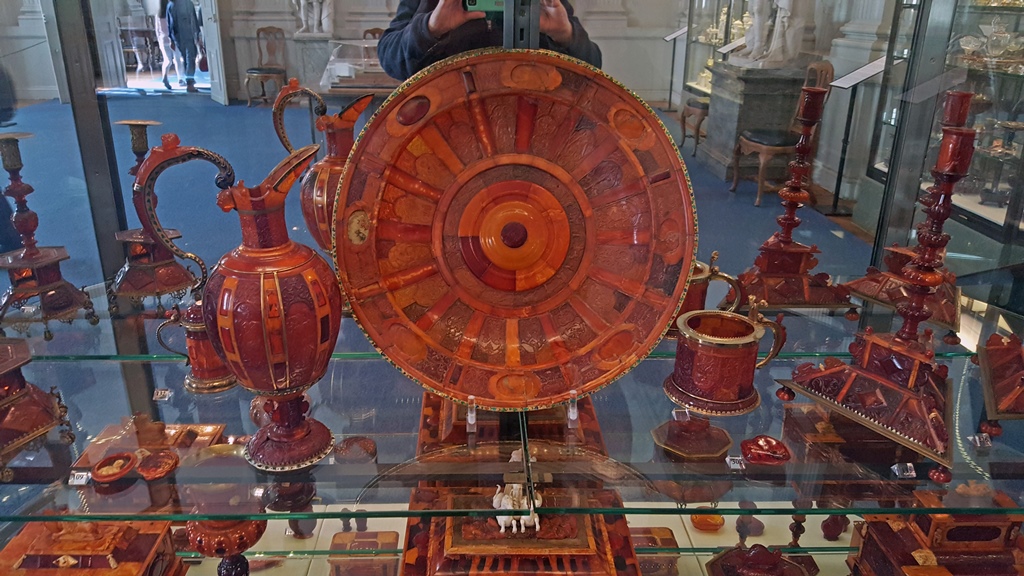
Amber Items
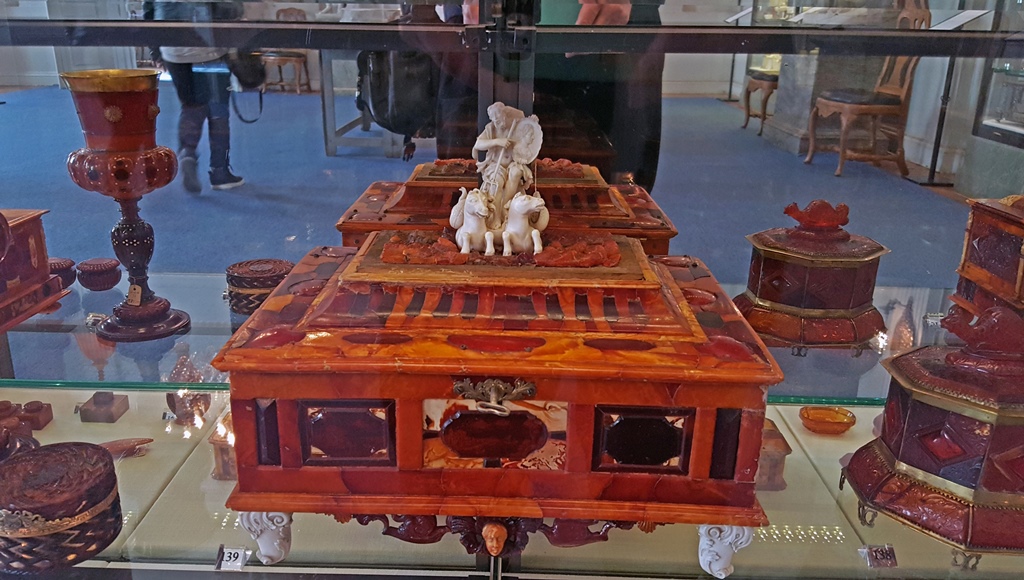
Chest of Amber and Ivory
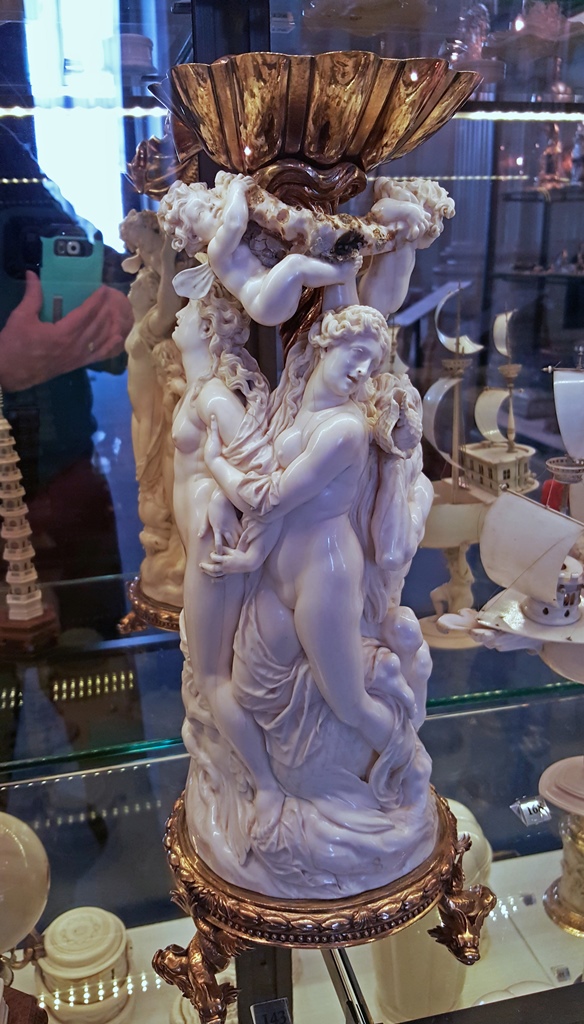
Graces and Cupid
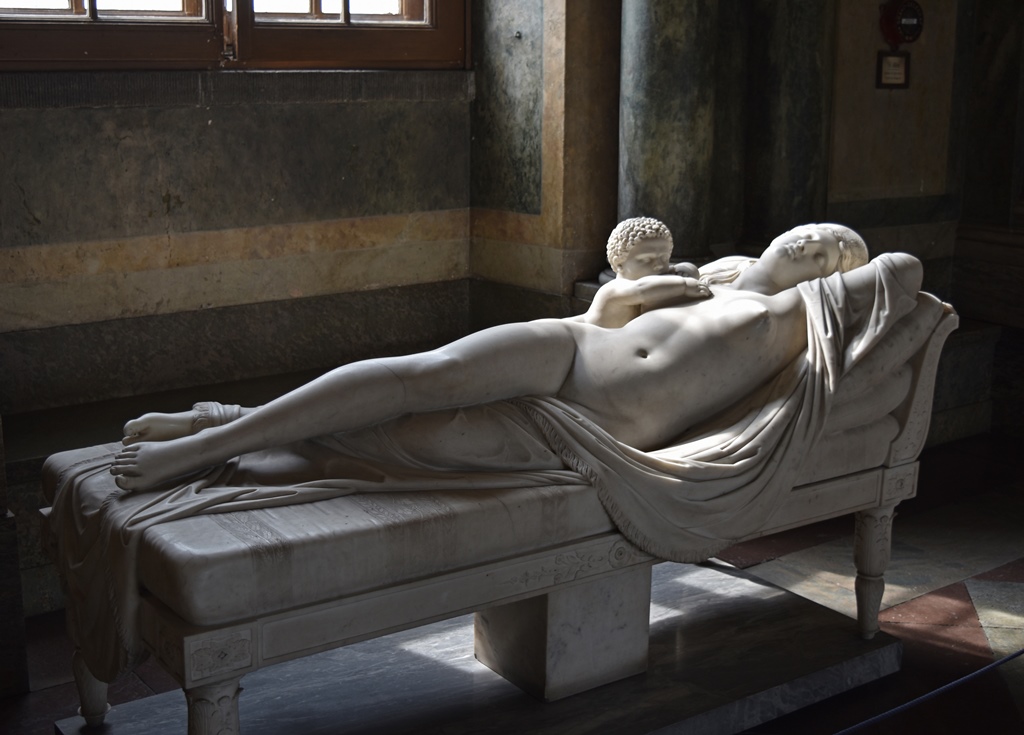
Venus and Cupid?
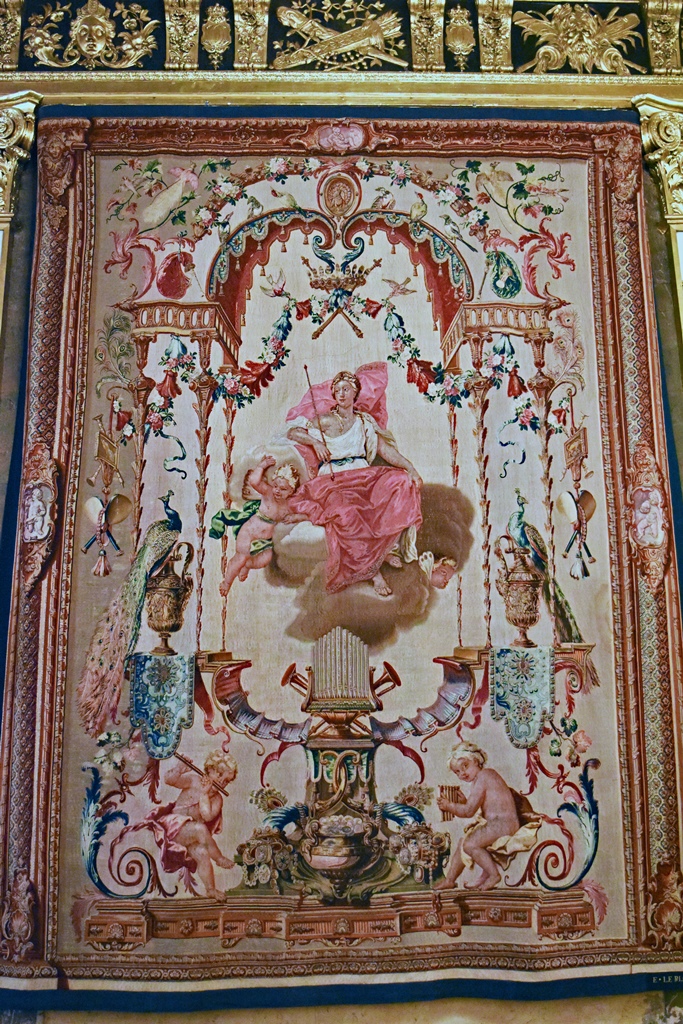
Tapestry
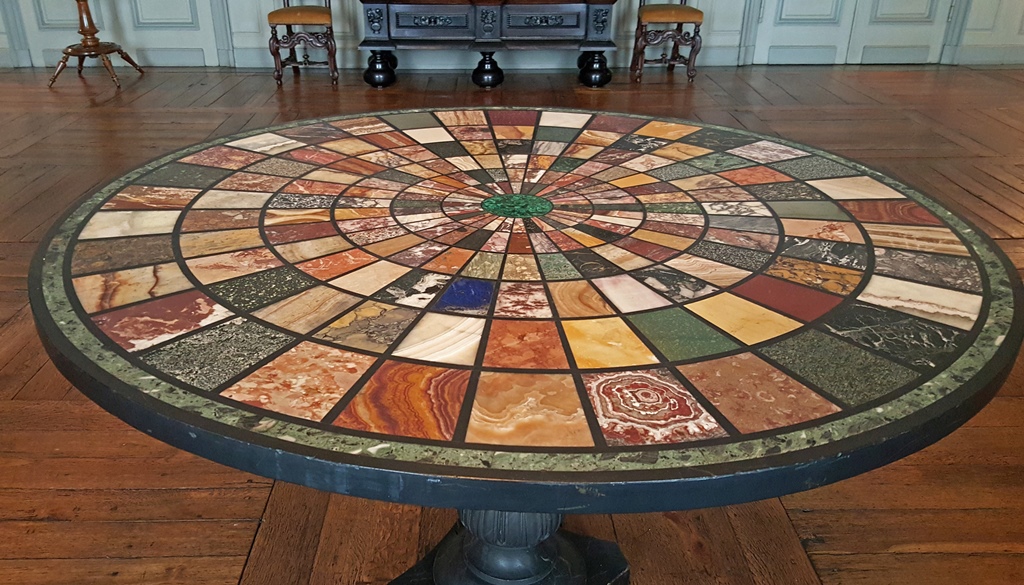
Mosaic Table, Guardroom
Finally finishing with the Royal Palace, we were ready for lunch. We walked further
into Gamla Stan to find a suitable restaurant, and found a place that served some
interesting-sounding Swedish food.
Nella Walking South on Västerlånggatan
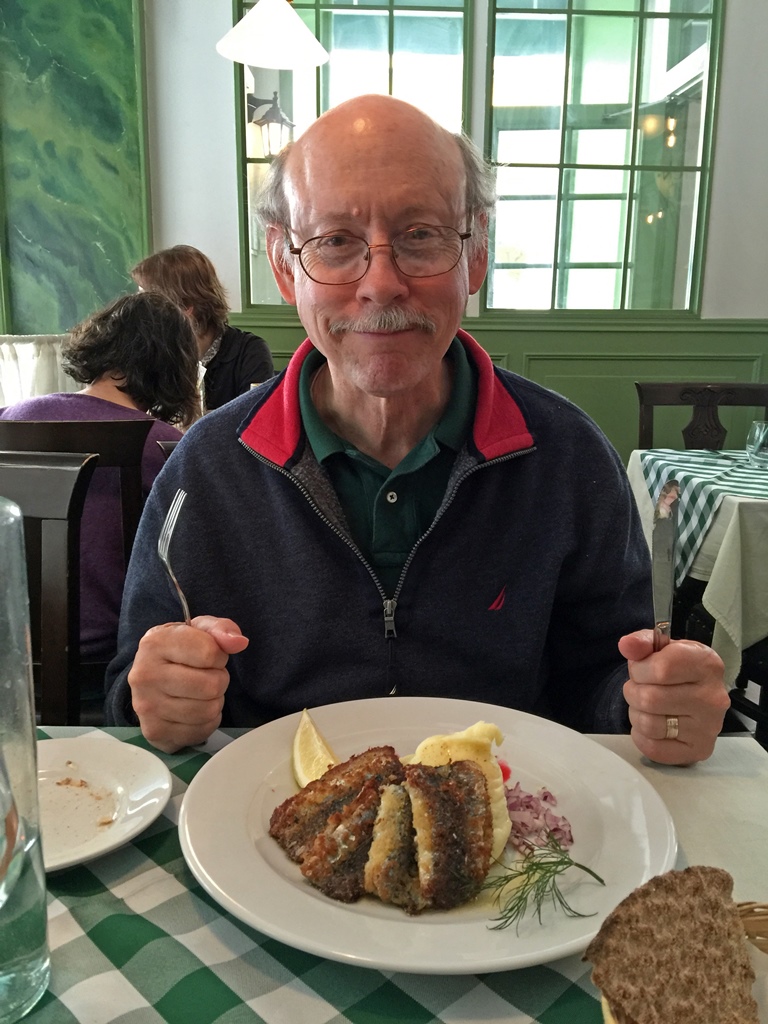
Bob with Lunch - Fish, Potatoes and Lingonberries
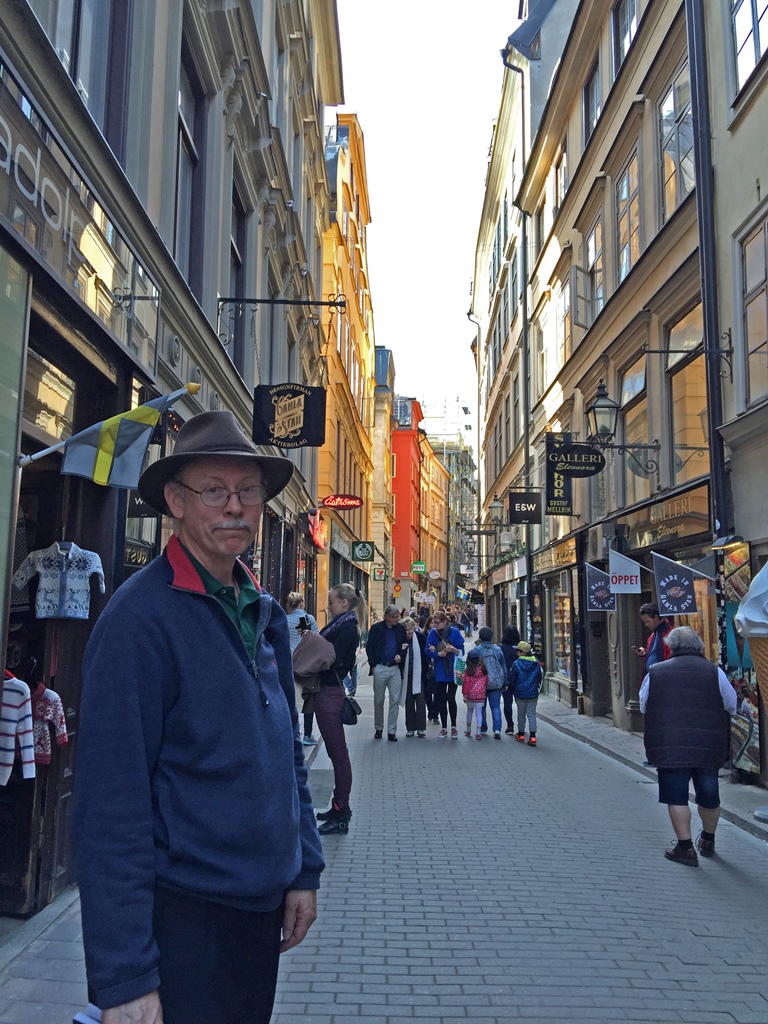
Bob on Västerlånggatan
After lunch, we wandered around and ended up in Stortorget, the oldest square in Stockholm.
There is still a well in the middle of the square, though the original well dried up in
1856 (thought to be a consequence of the ongoing post-glacial rebound). The well was
relocated for a time but brought back in the 1950s. You can get water from it again,
courtesy of the city’s water supply. Also on this square is the Stock Exchange Building,
which now houses the Swedish Academy (caretakers of the Swedish language and selectors of
annual laureates for the Nobel Prize in Literature) and a library and museum dedicated to
the Nobel Prizes. This square was also the site of the 1520 Stockholm Bloodbath, in which
Danish King Christian II had nearly 100 Swedes executed following his coronation
celebration (this led to a revolution in which Sweden broke away from Denmark).
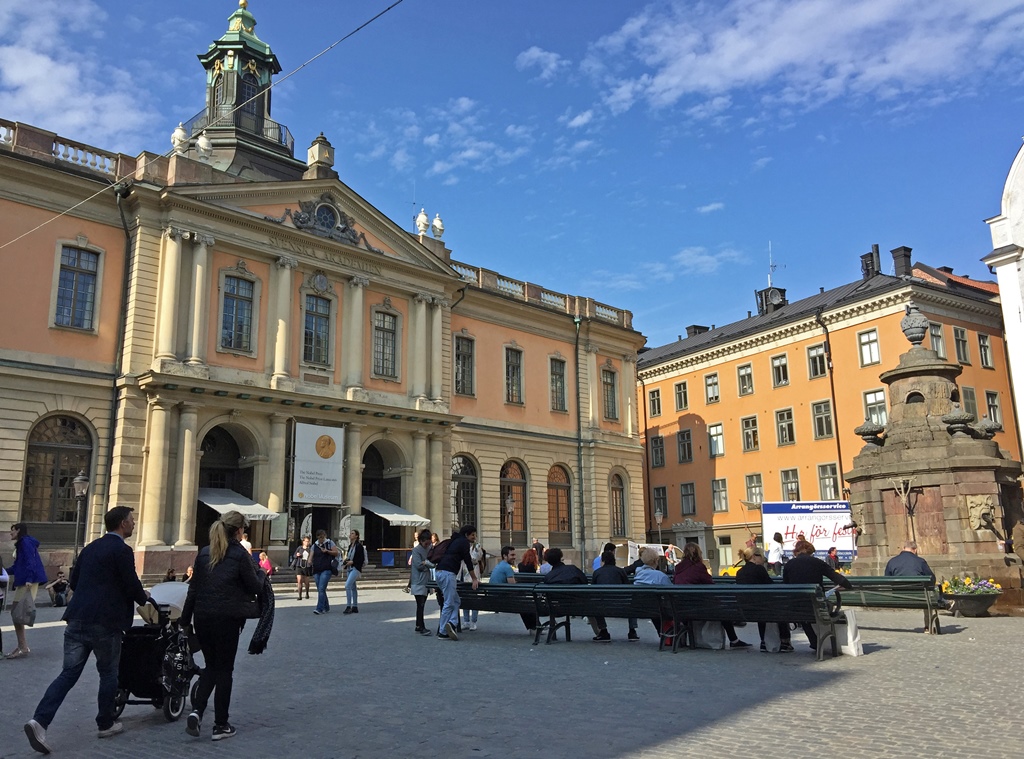
Nobel Museum and Stortorget
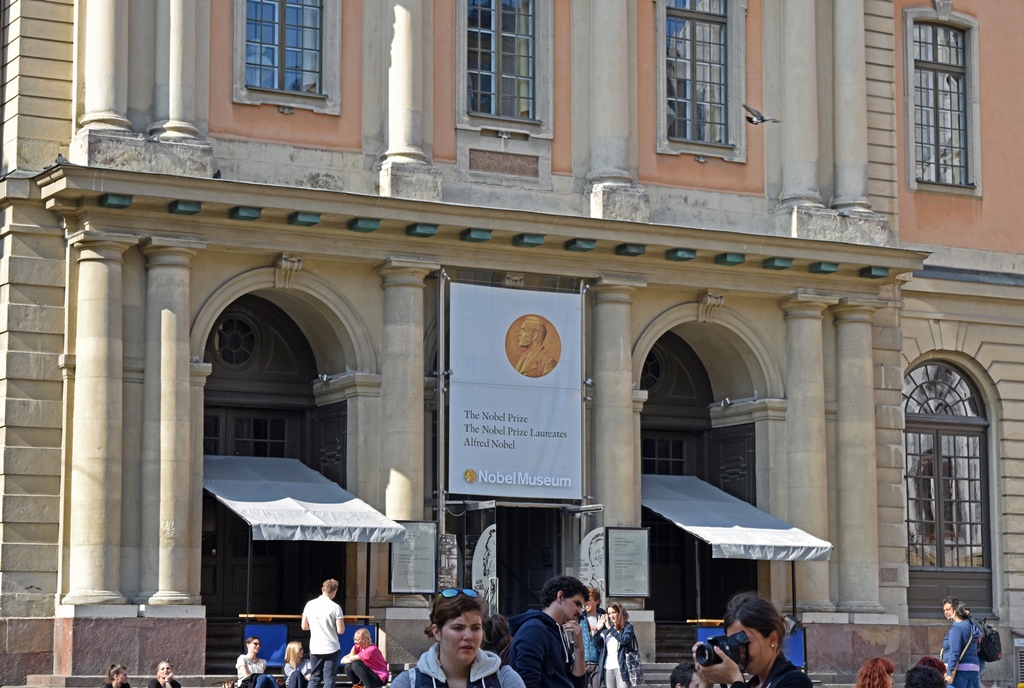
Nobel Museum
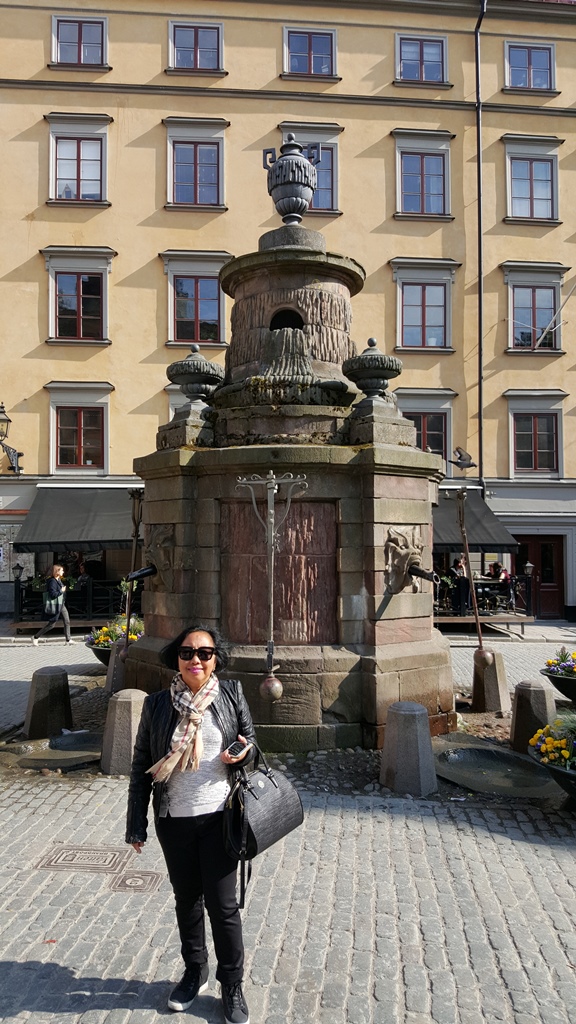
Nella and Town Well
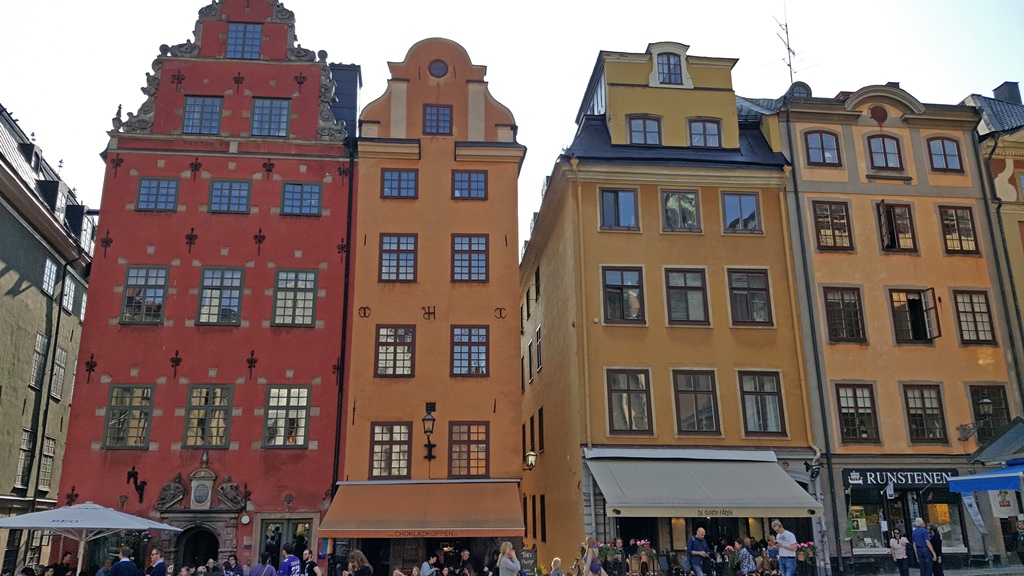
Old buildings on Stortorget
Returning toward the palace, we walked down Slottsbacken, a wide street along the
southern side of the palace, which extends from the Stockholm Cathedral (or Storkyrkan,
to appear in a future page) downhill to the waterfront. There is a nice view of the harbor
from Slottsbacken, and the street also has some statues and an obelisk.
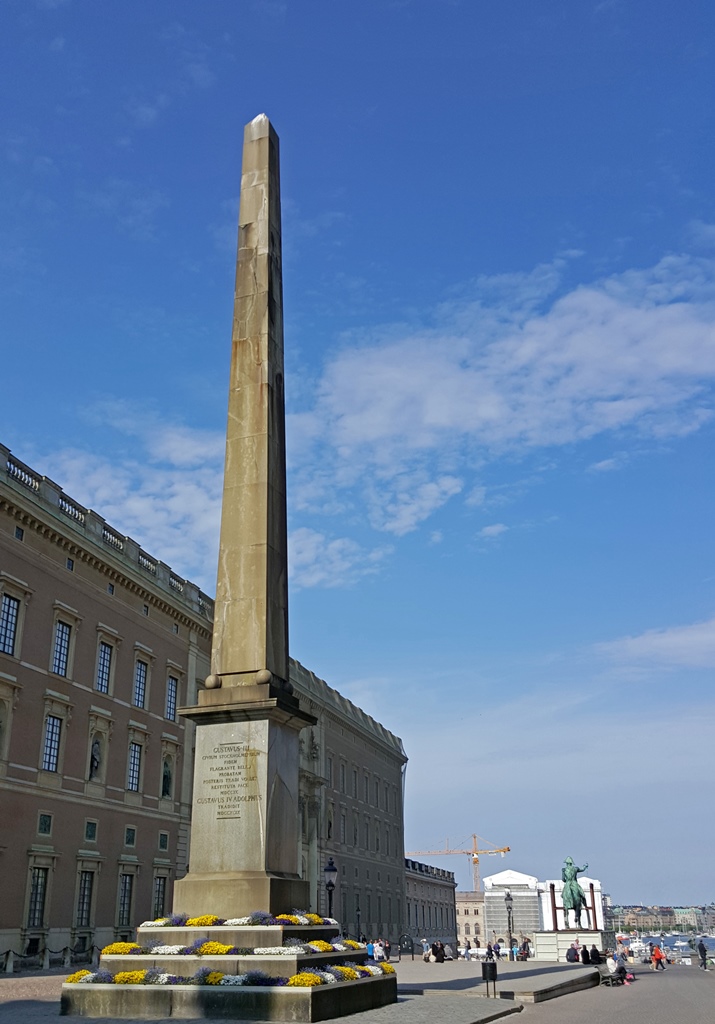
1788 War Obelisk
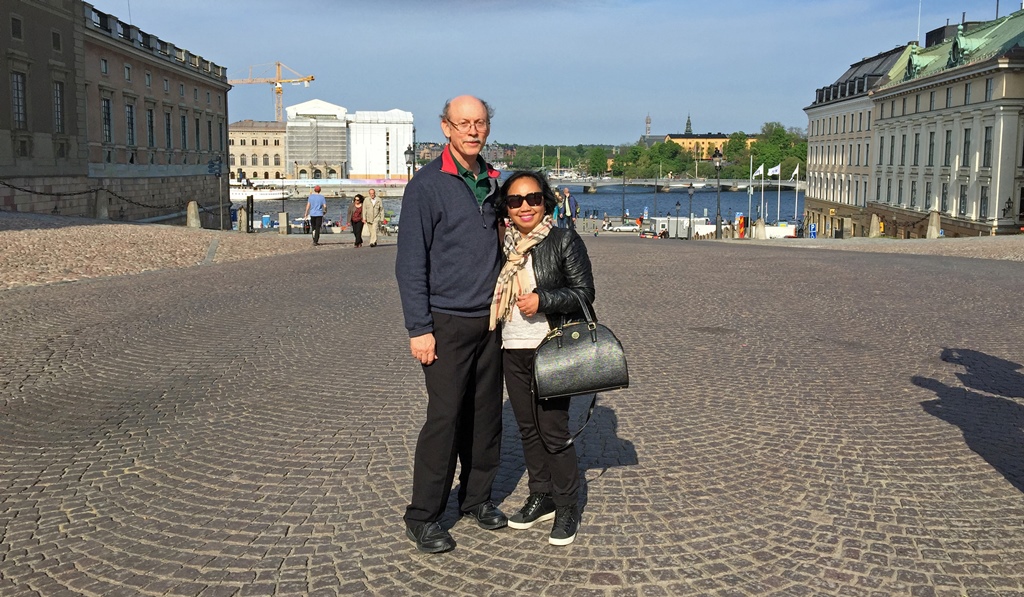
Bob and Nella and Harbor
Statue of Gustav III
Reaching the waterfront, we had a nice view of the harbor in all directions.
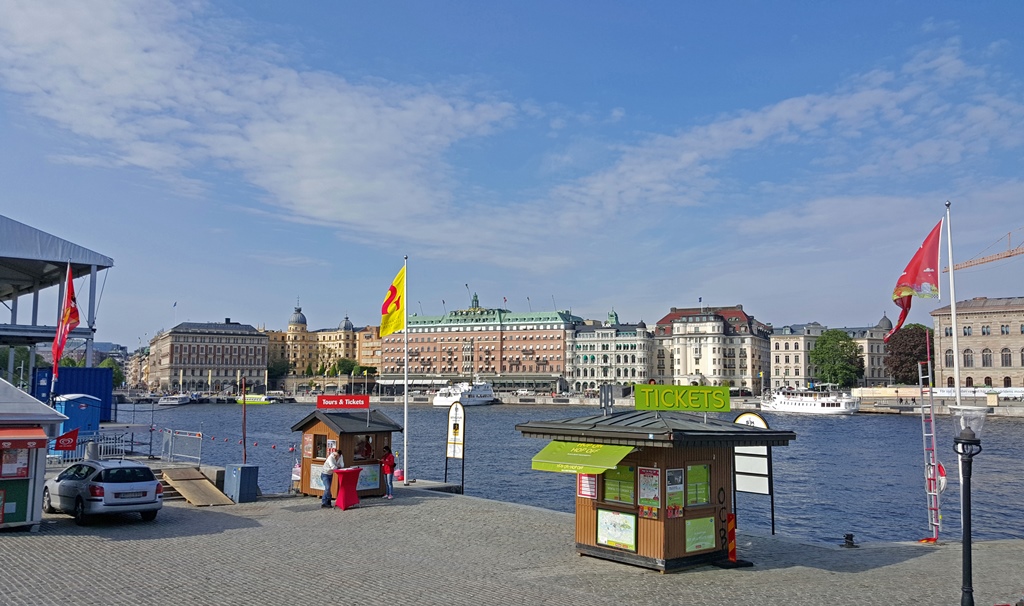
Waterfront from Gamla Stan
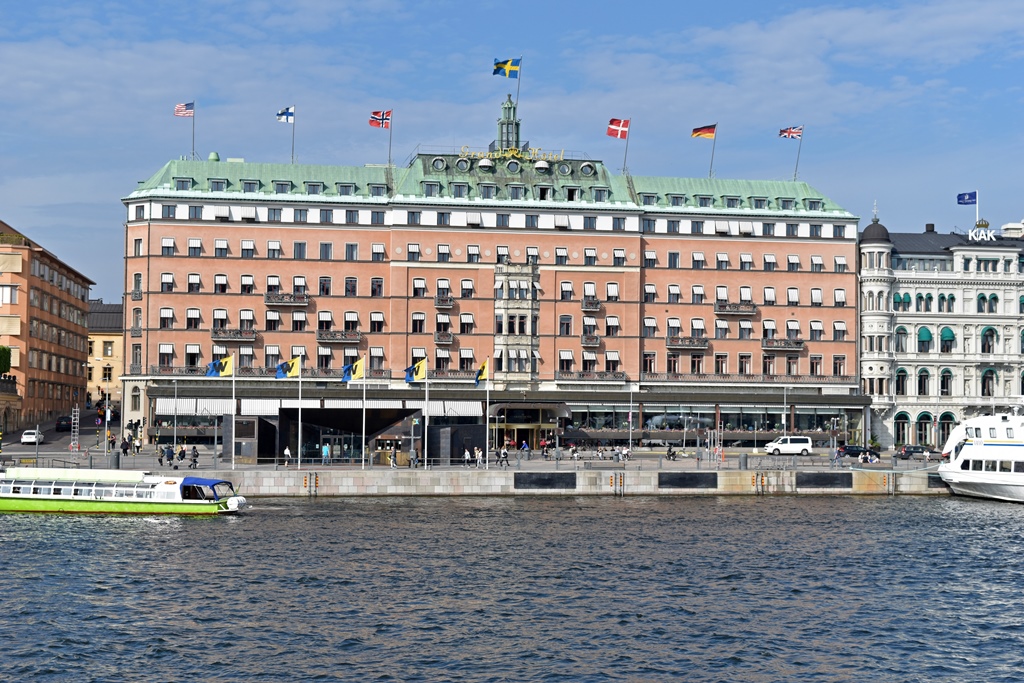
Grand Hotel
By this time we were thinking in terms of getting back to the hotel and taking a nap. First,
we had to cross back to the mainland. We noticed a bridge to our left (called Strömbron)
and crossed over. This didn’t bring us very close to the hotel, but did take us to a large park
called Kungsträdgården, which seemed to be popular with the locals. From the park we
headed west toward the hotel, passing the St. Clara Church (whose 381-foot steeple is a
prominent landmark) along the way.
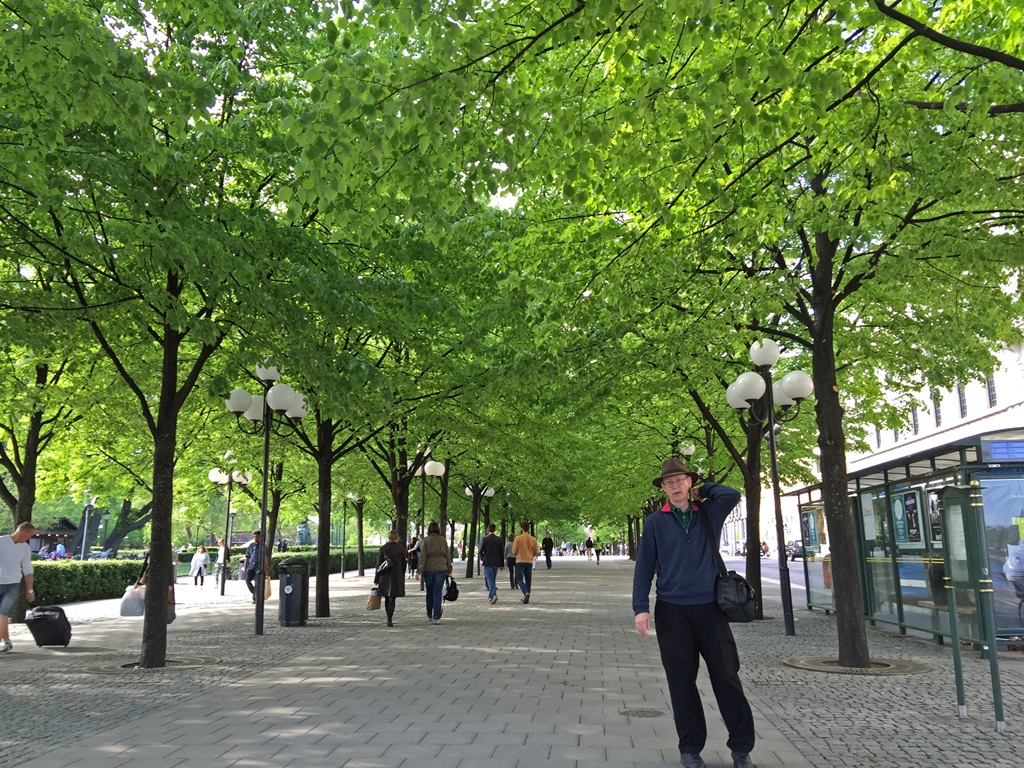
Bob and Kungsträdgården
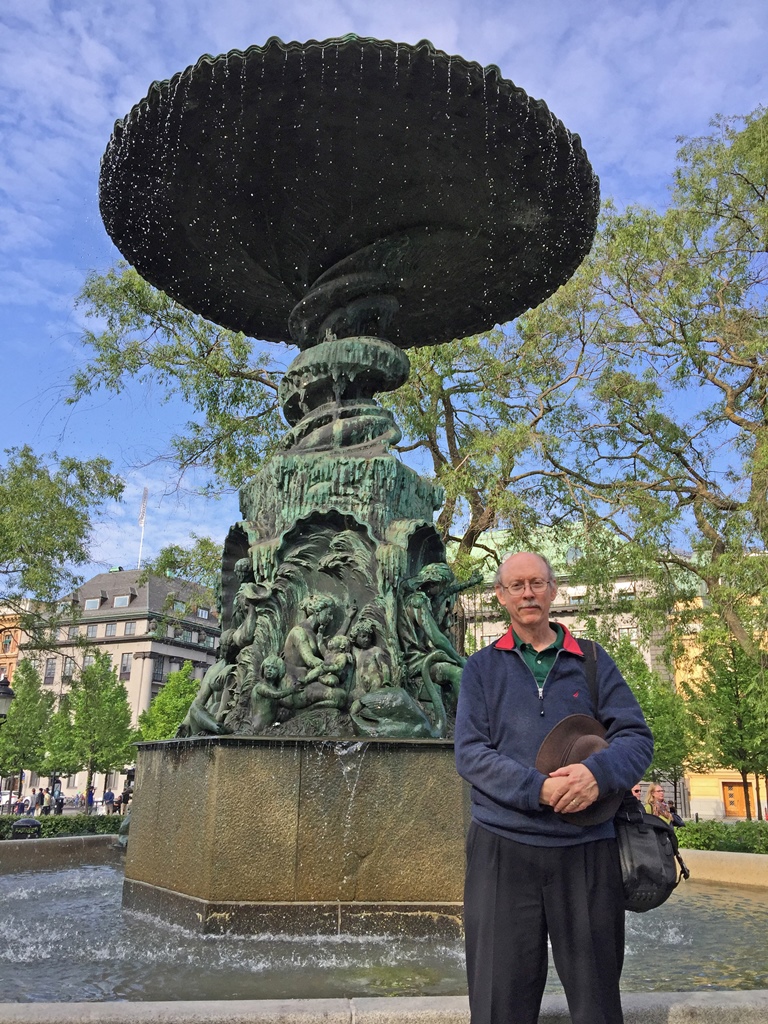
Bob and Fountain, Kungsträdgården
St. Clara Church
Finally we reached the hotel, and spent the rest of the day in relaxation mode. We had a
lot planned for the following day, and would need the rest. We would be starting by
switching hotels (there’s a chance that this will be sensibly explained in the next page),
and then we would be heading for Stockholm’s number one tourist attraction – the Vasa
Museum.

